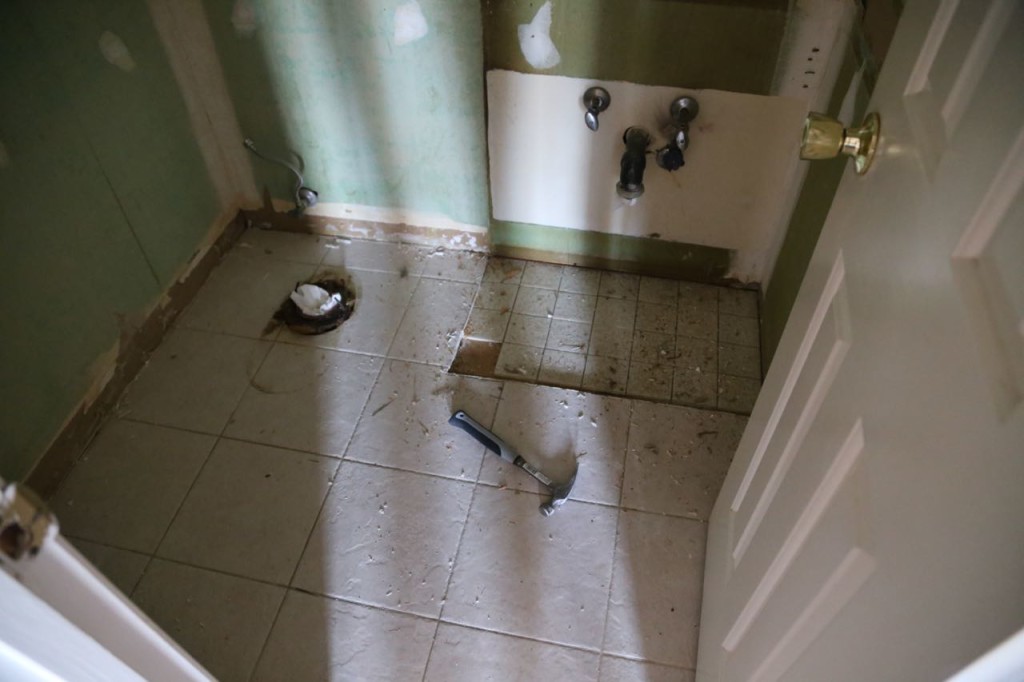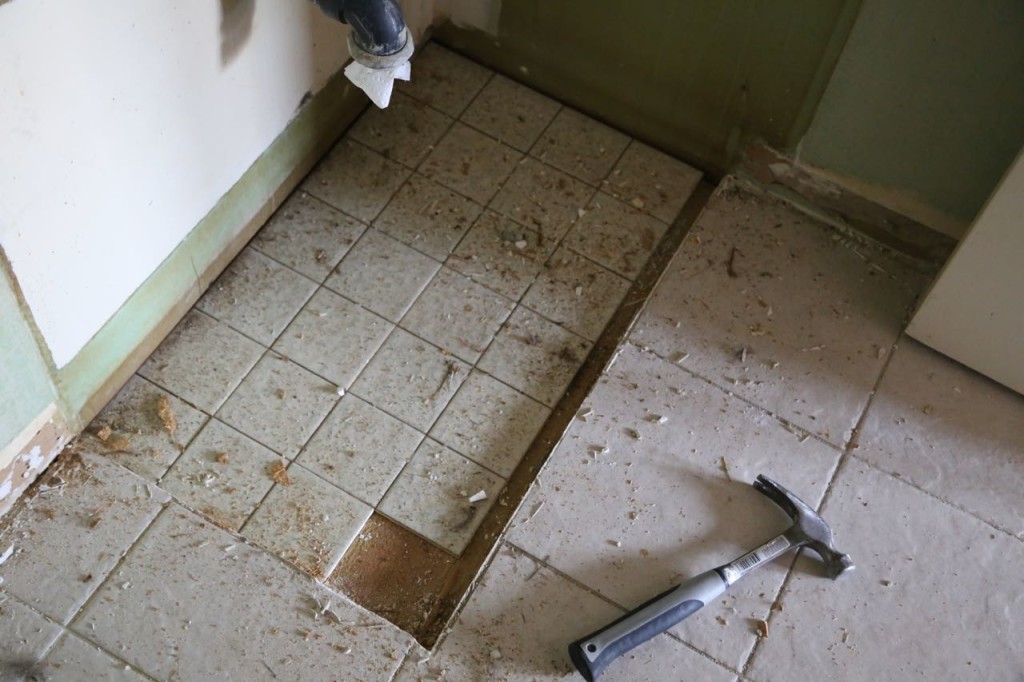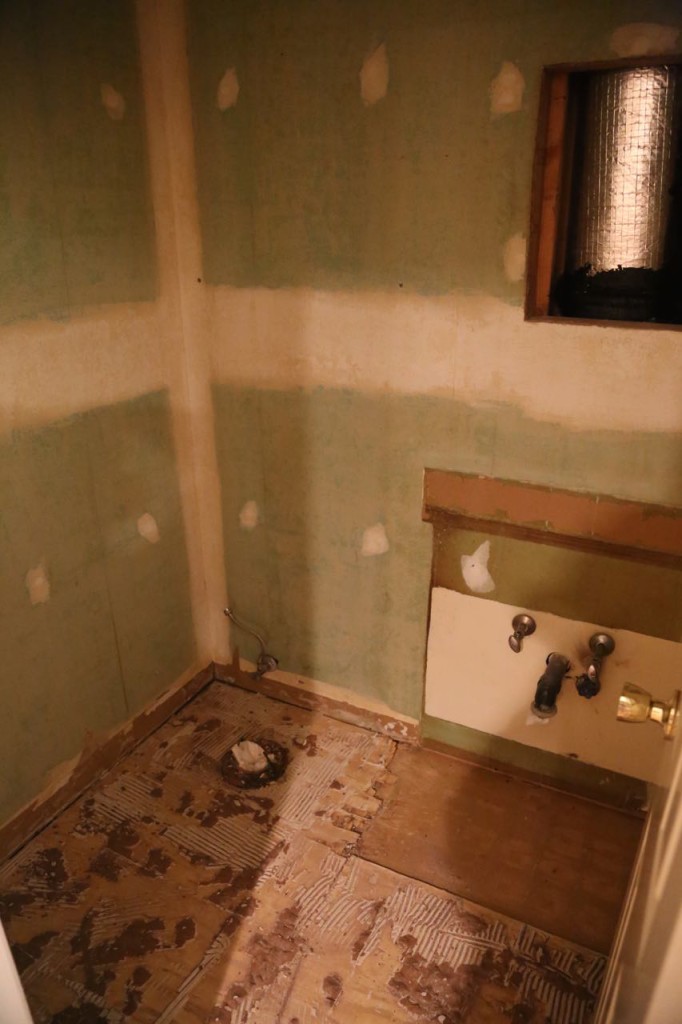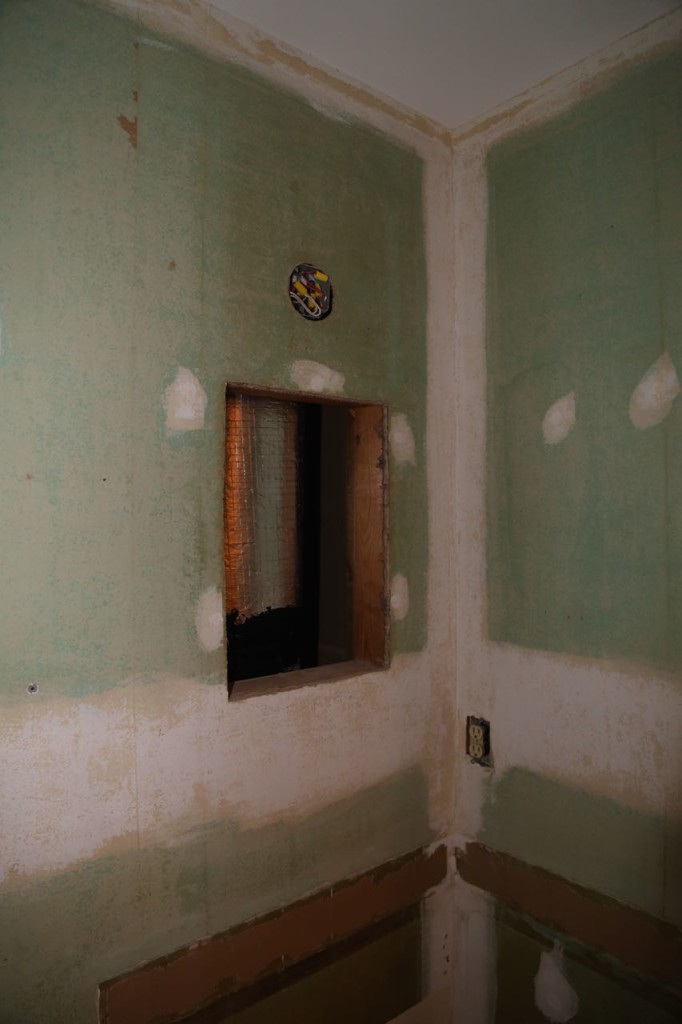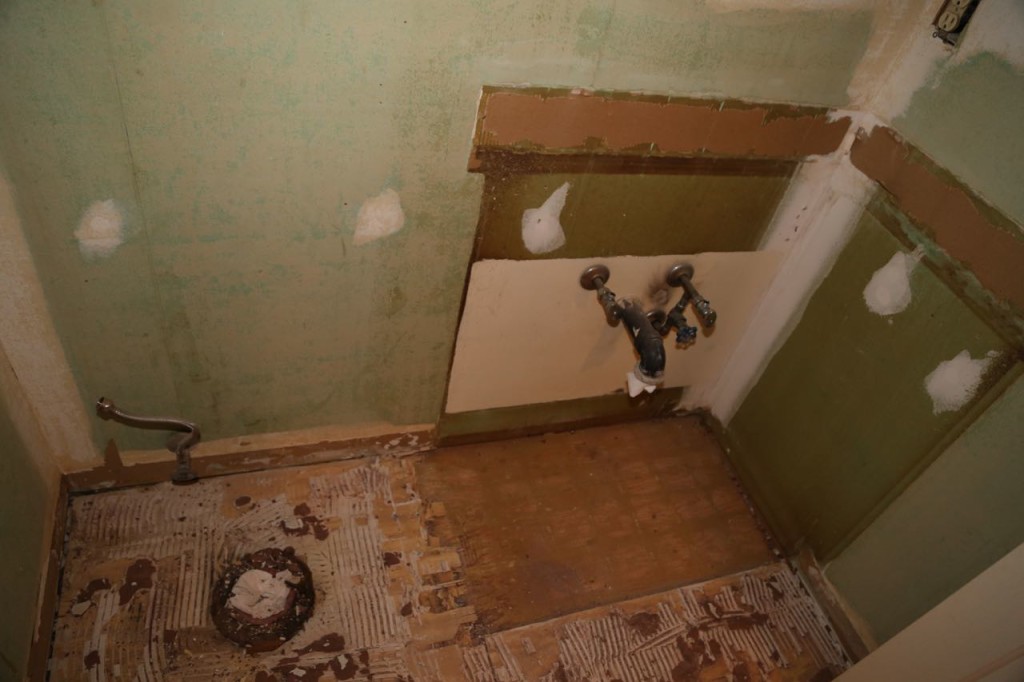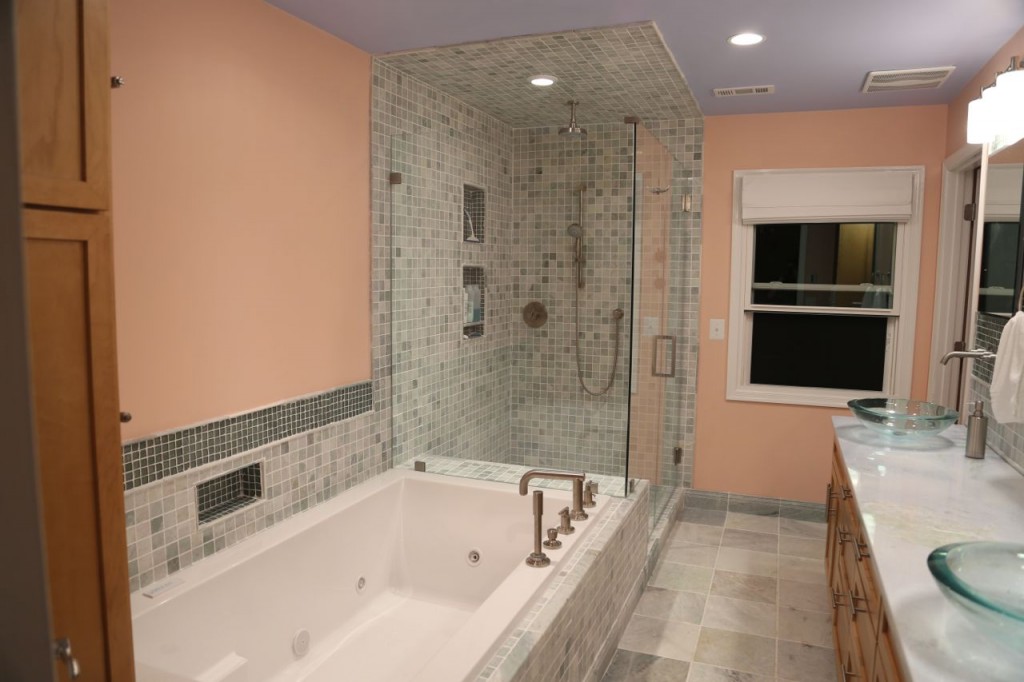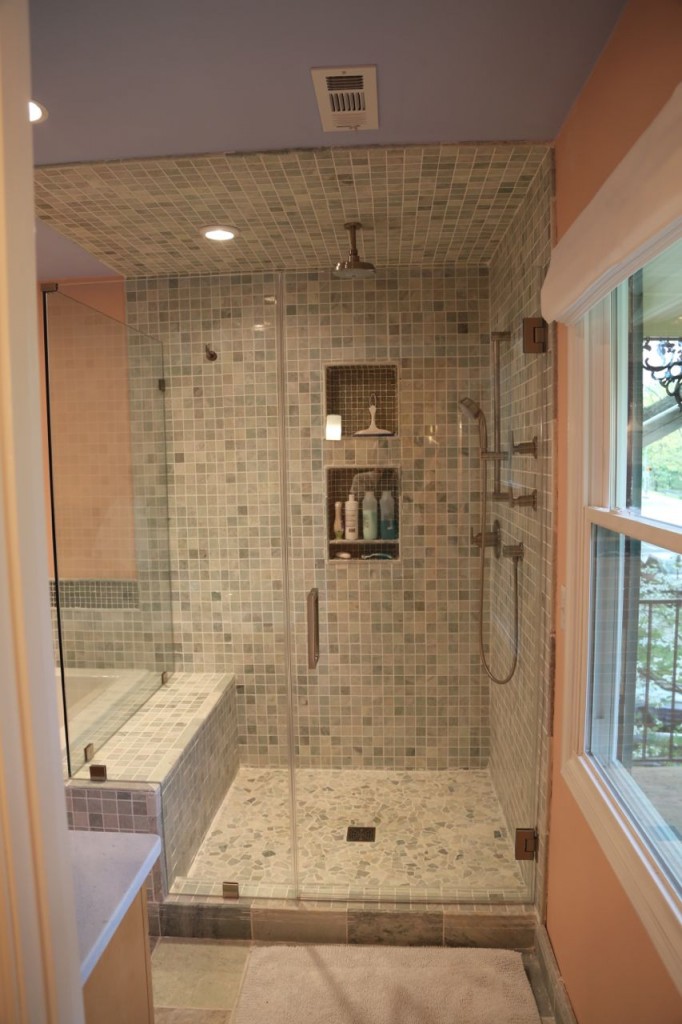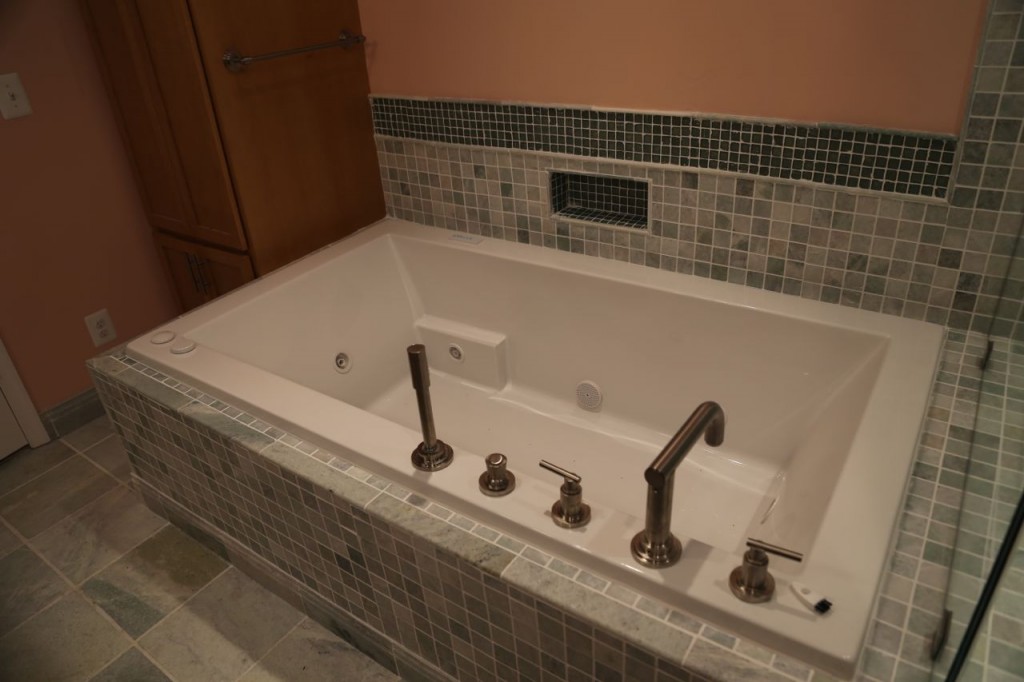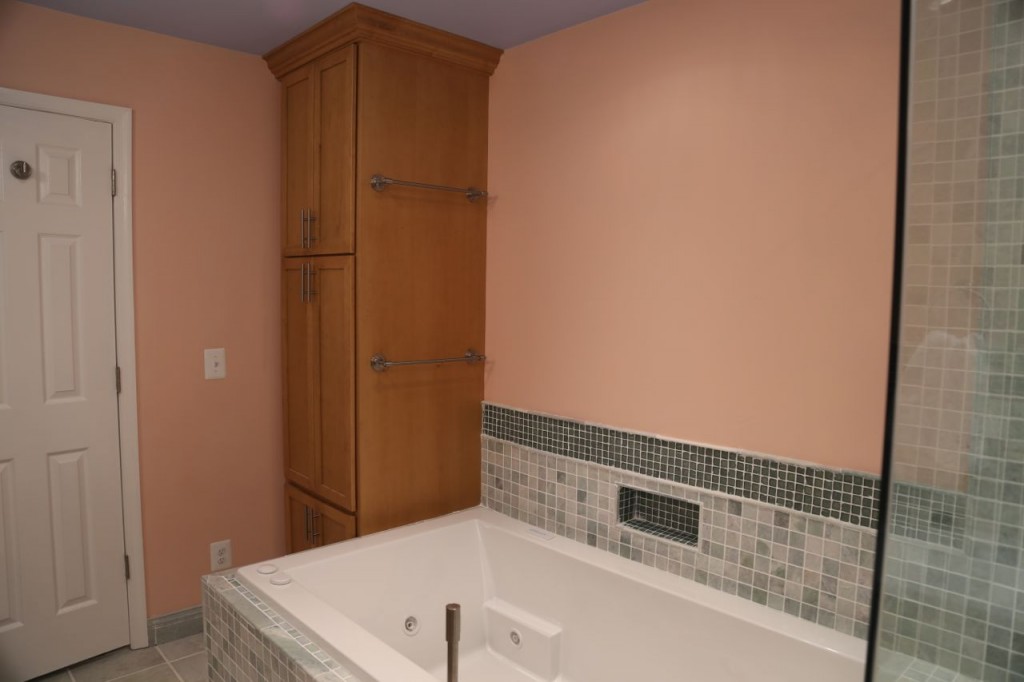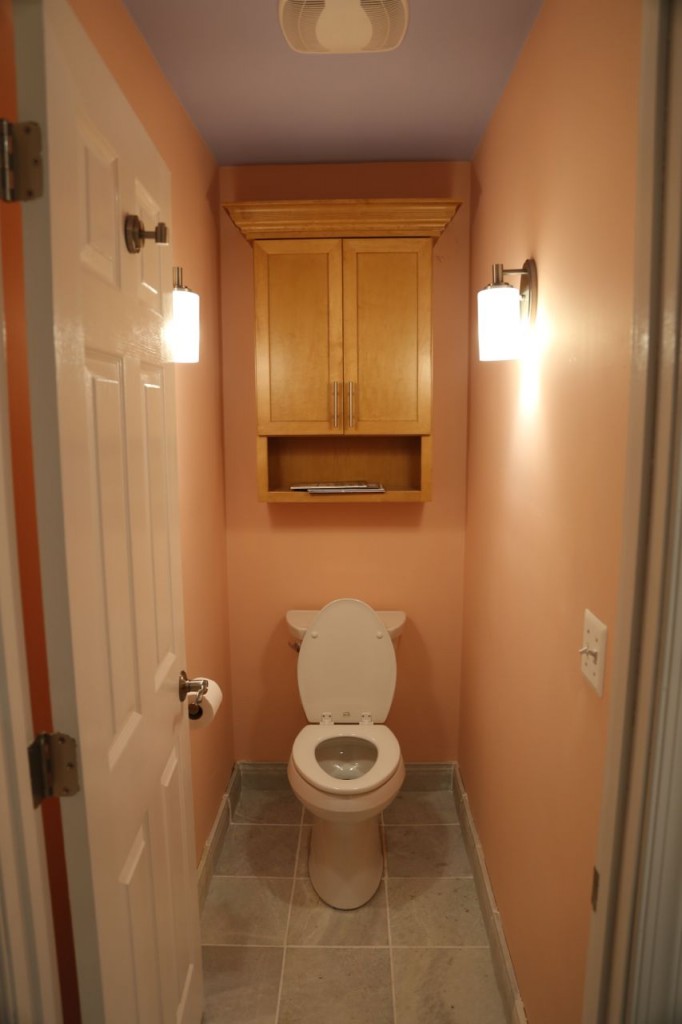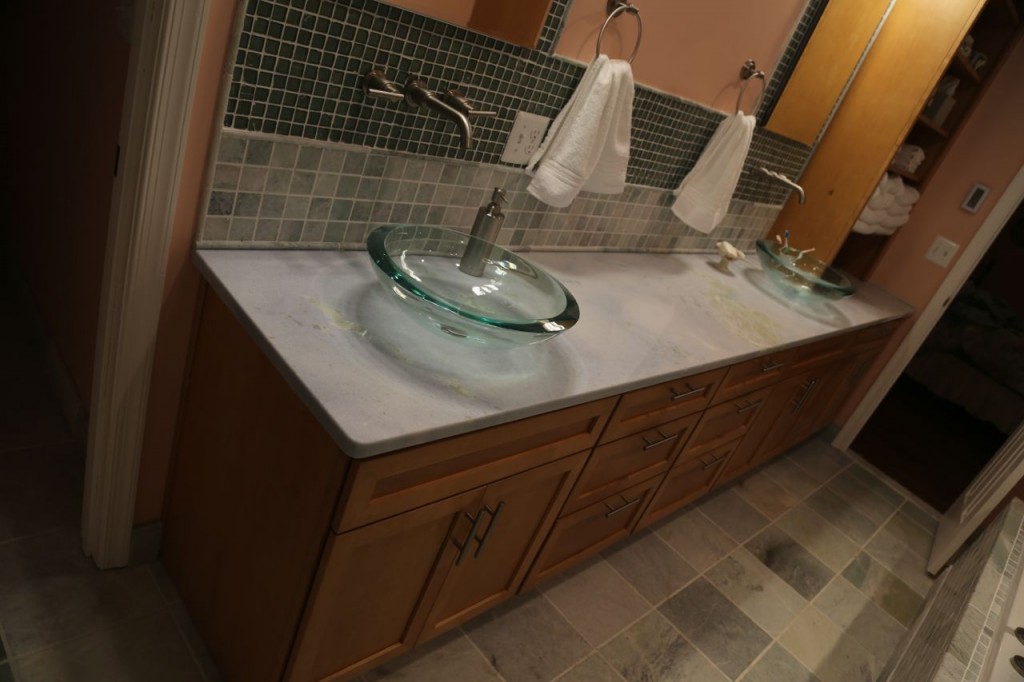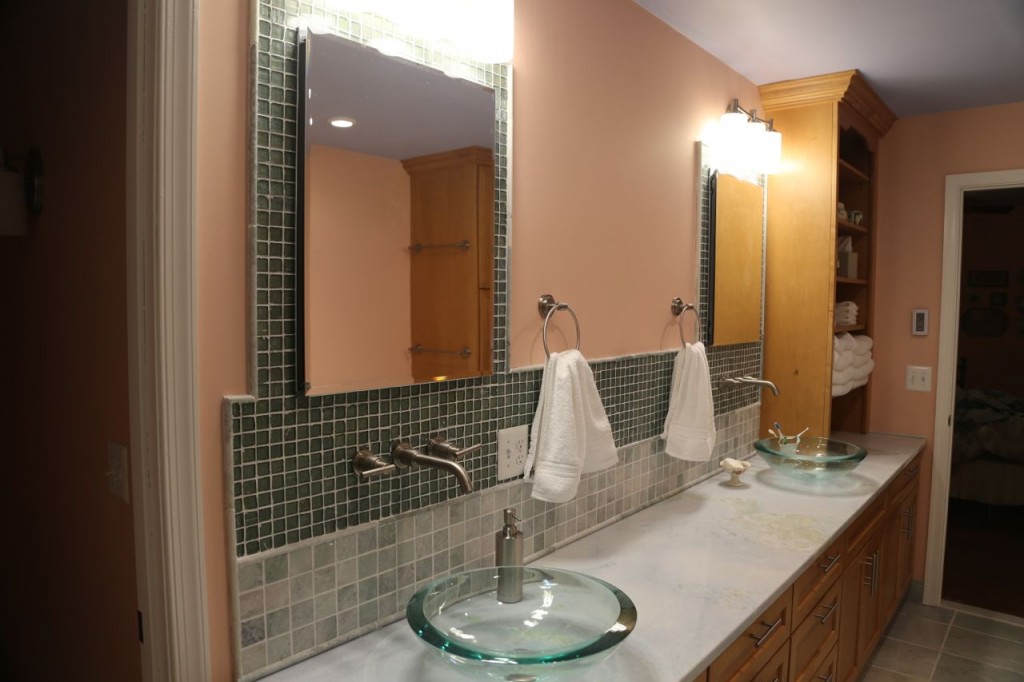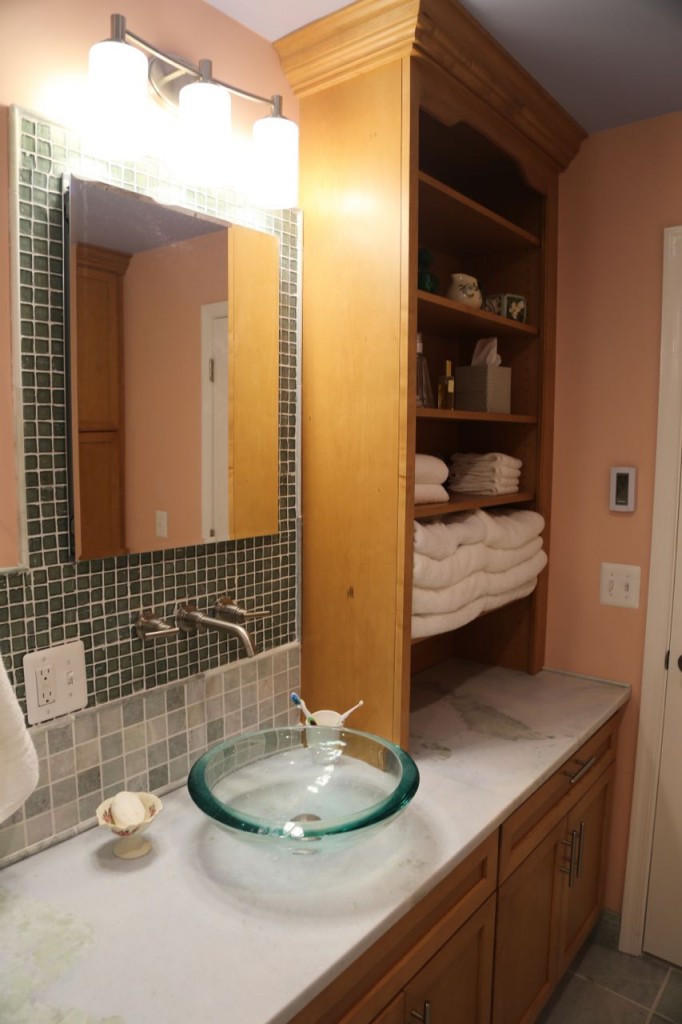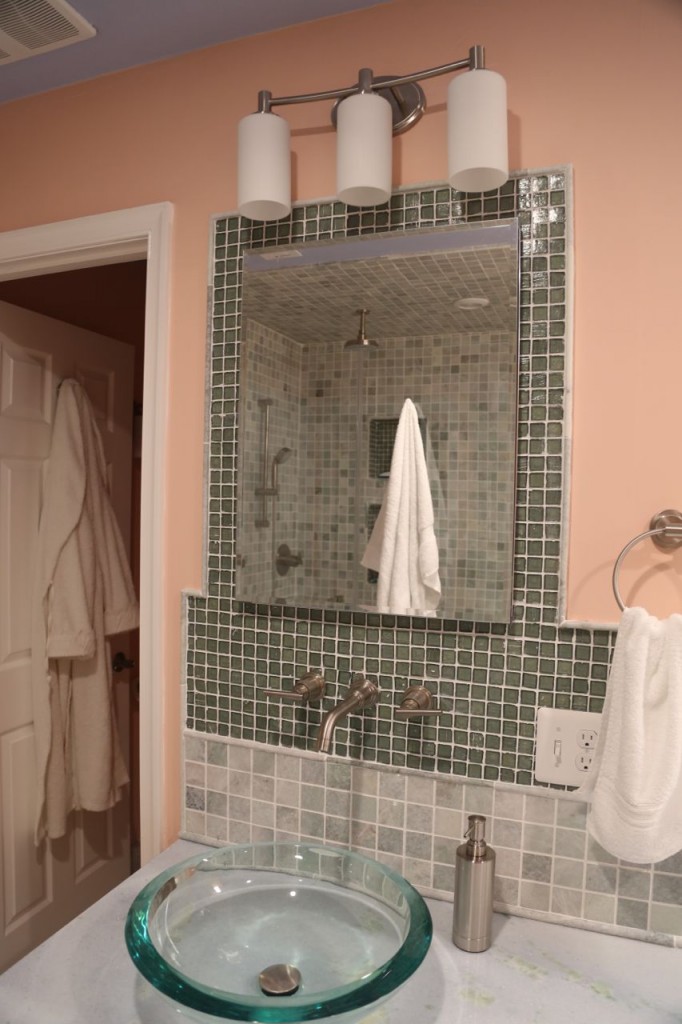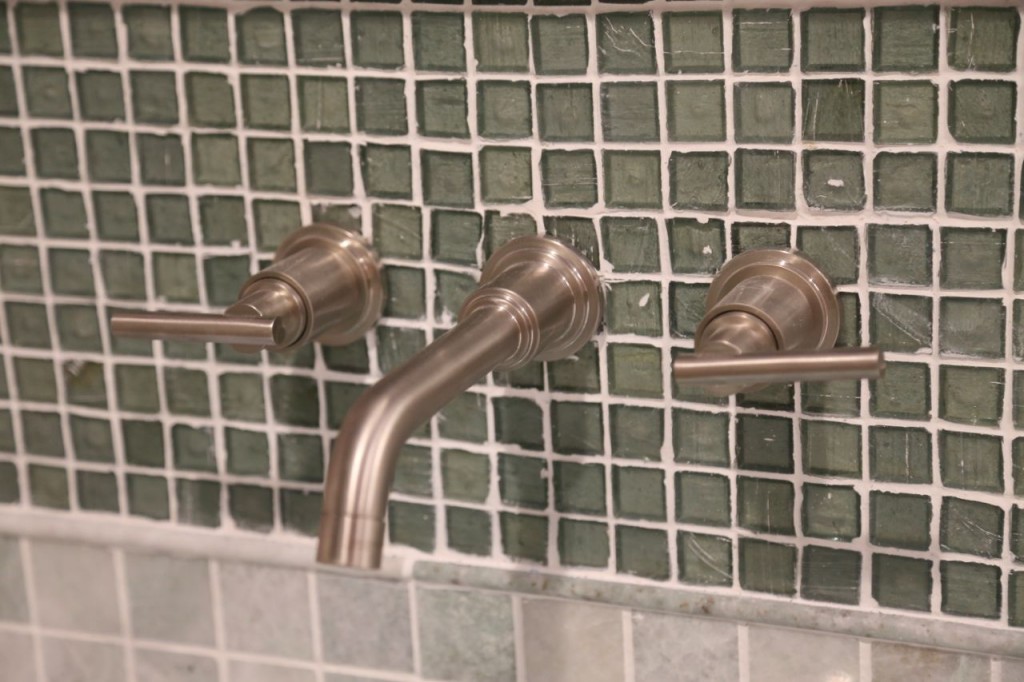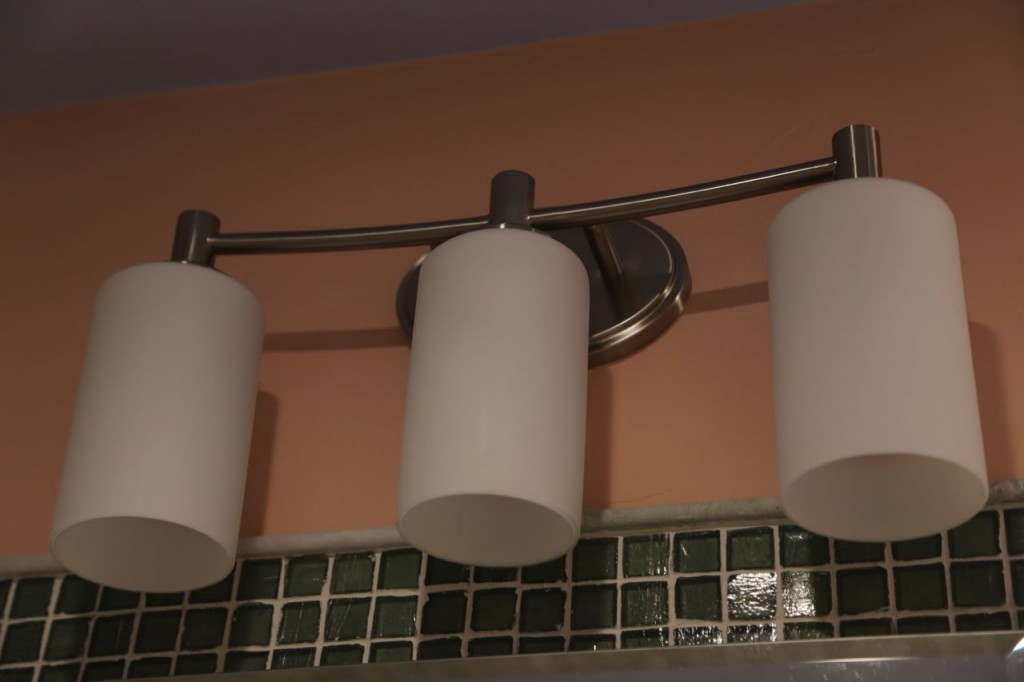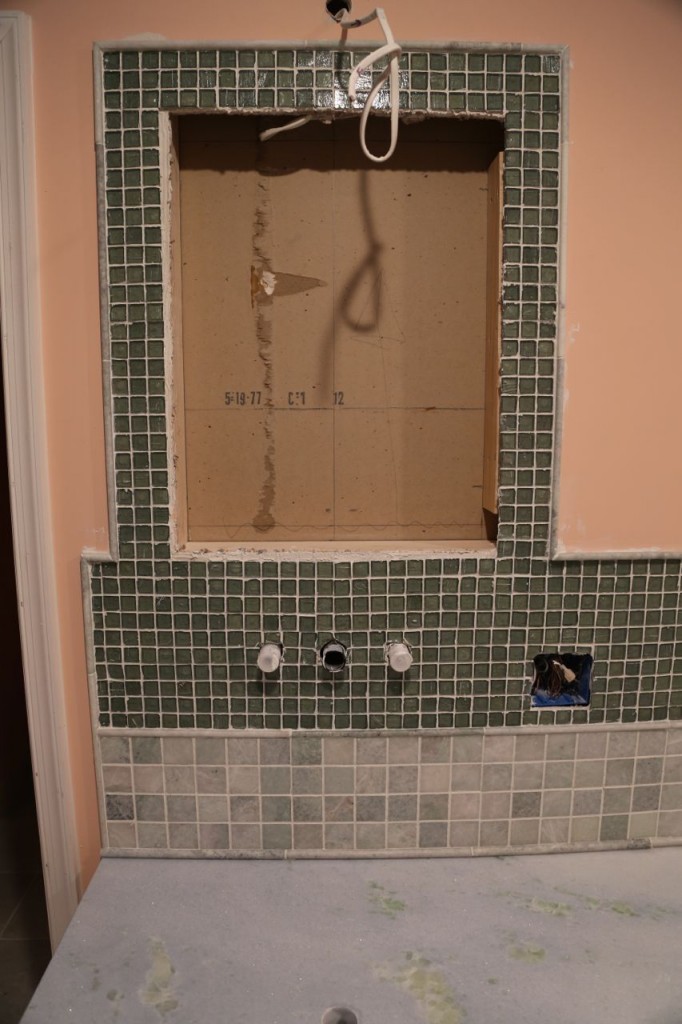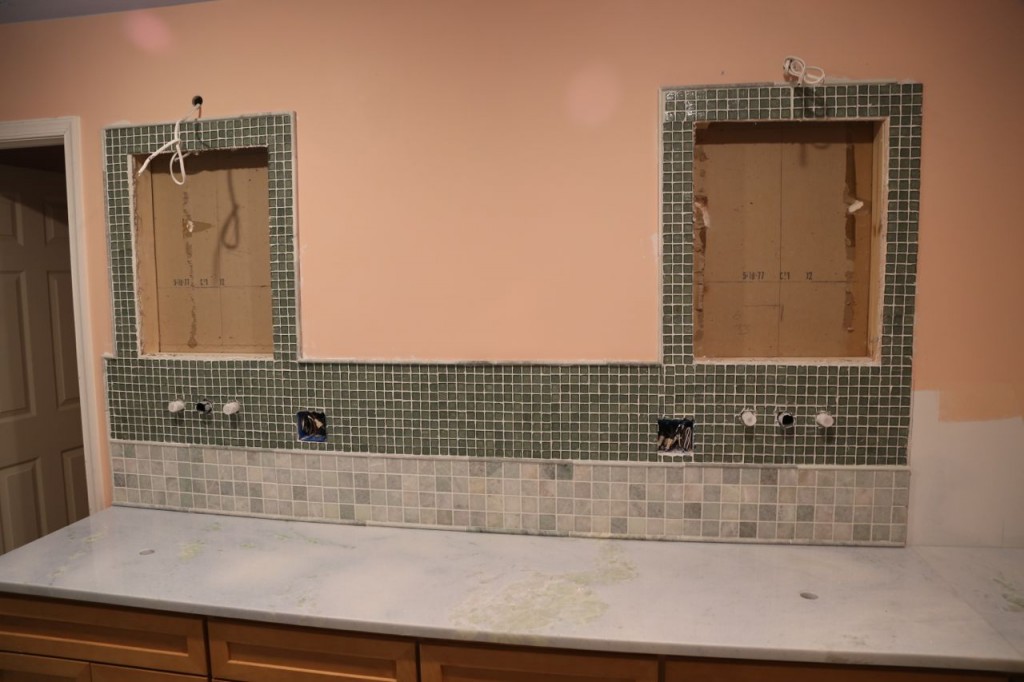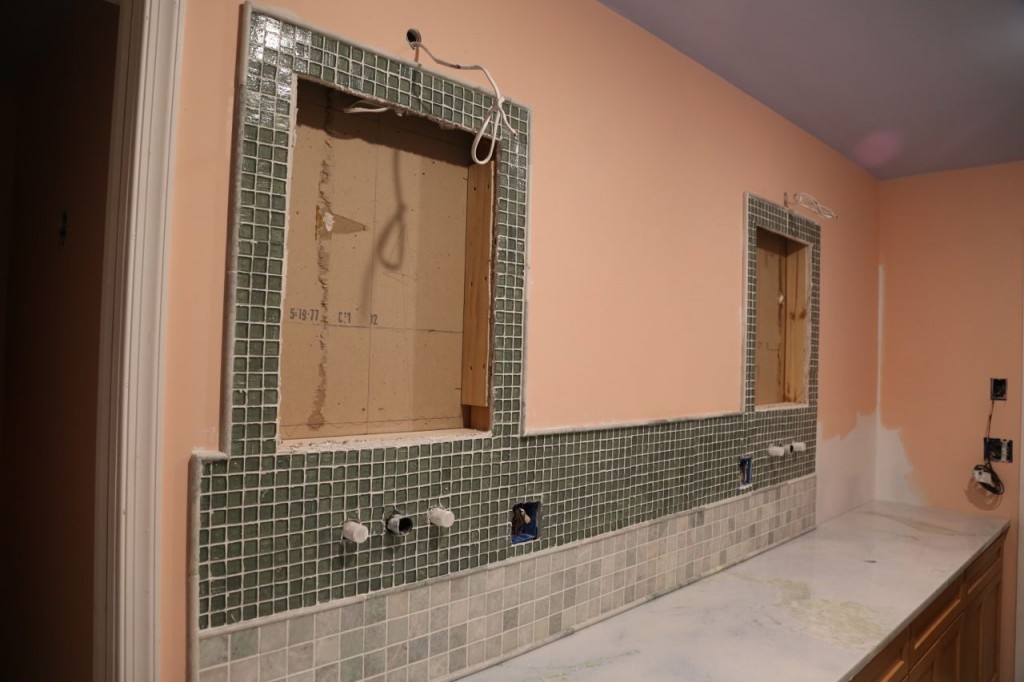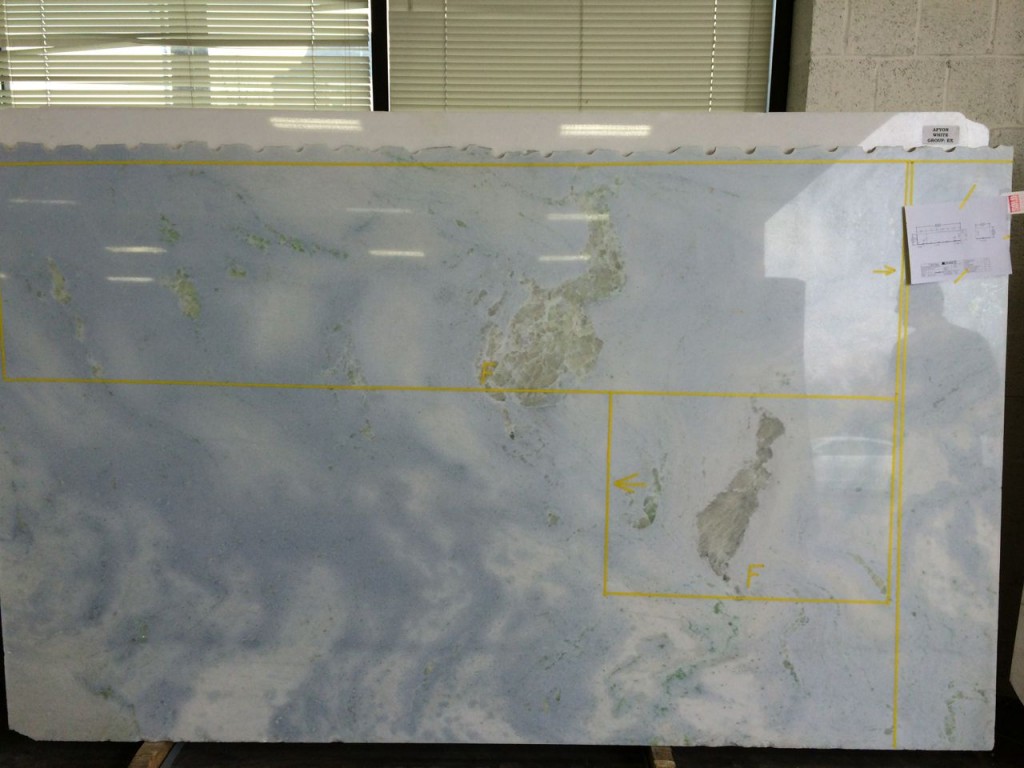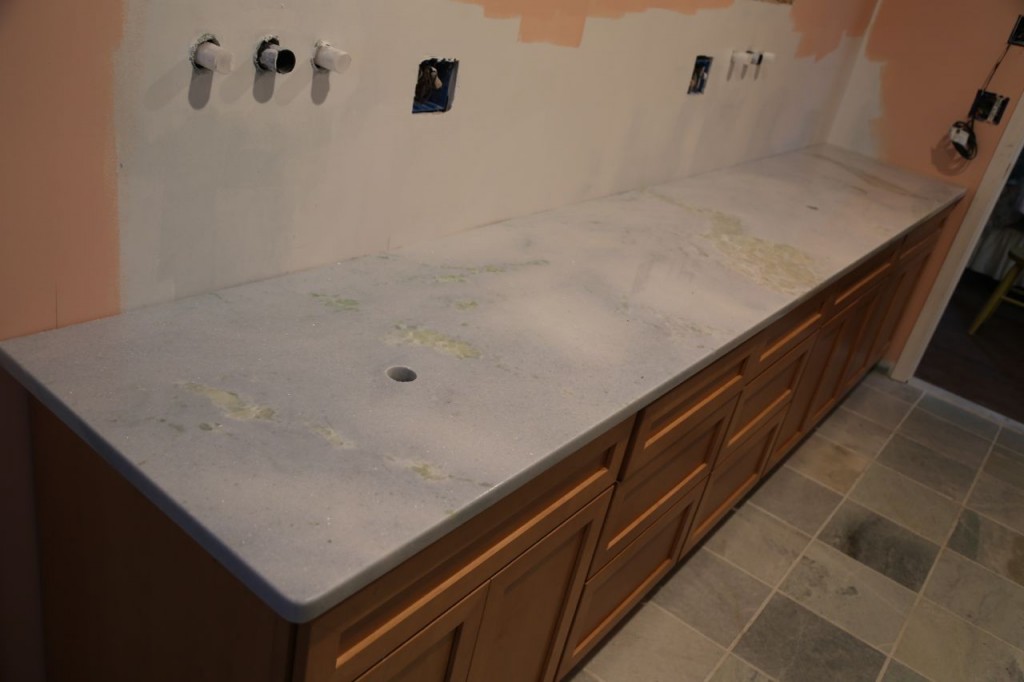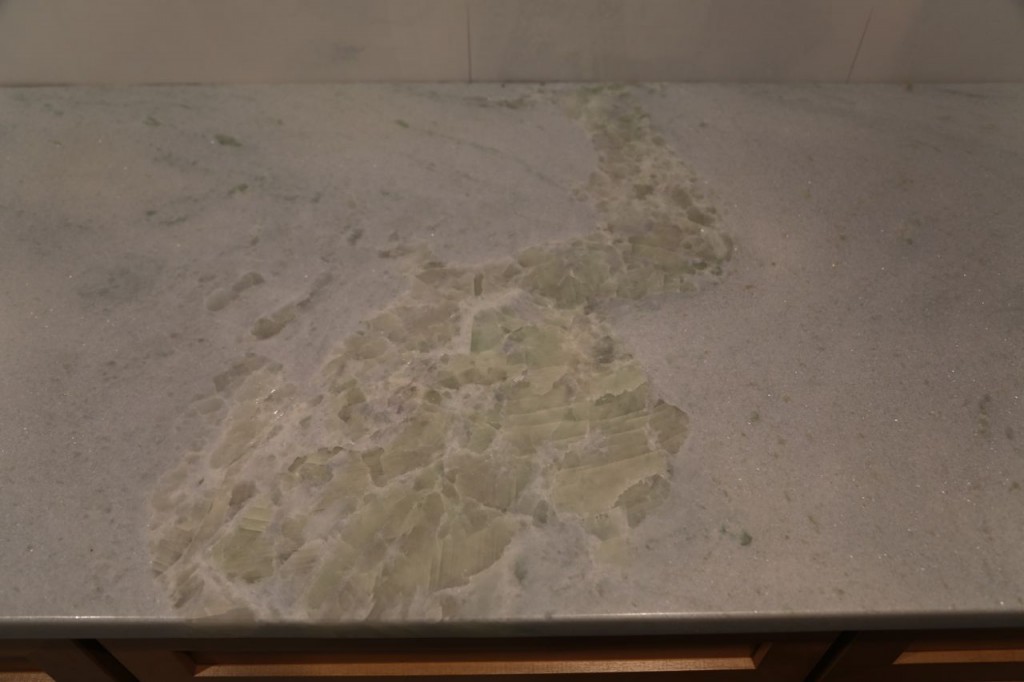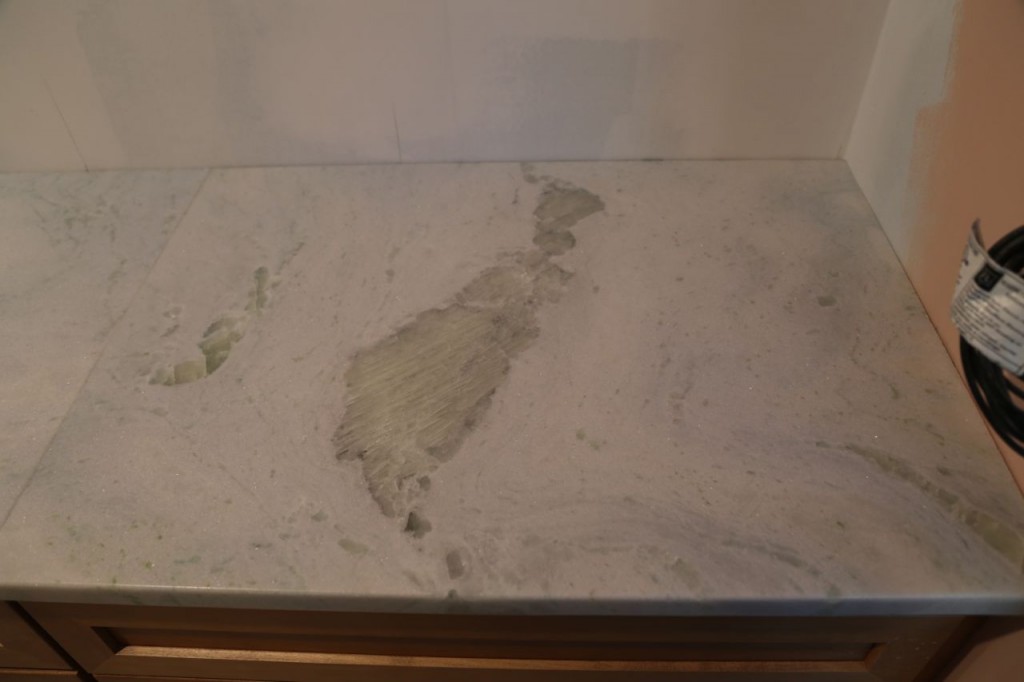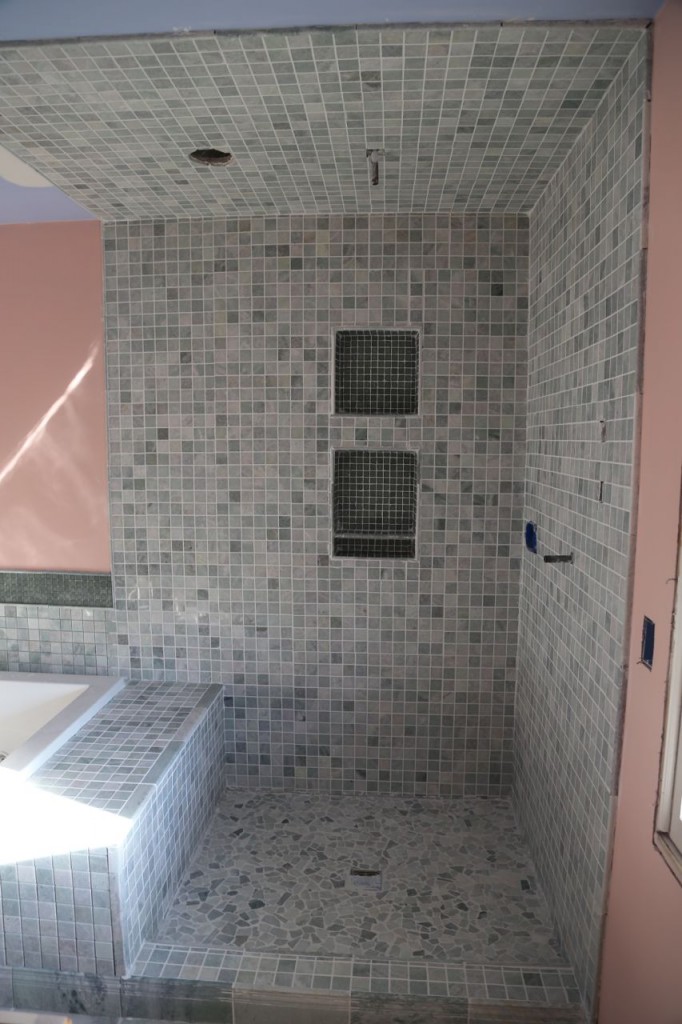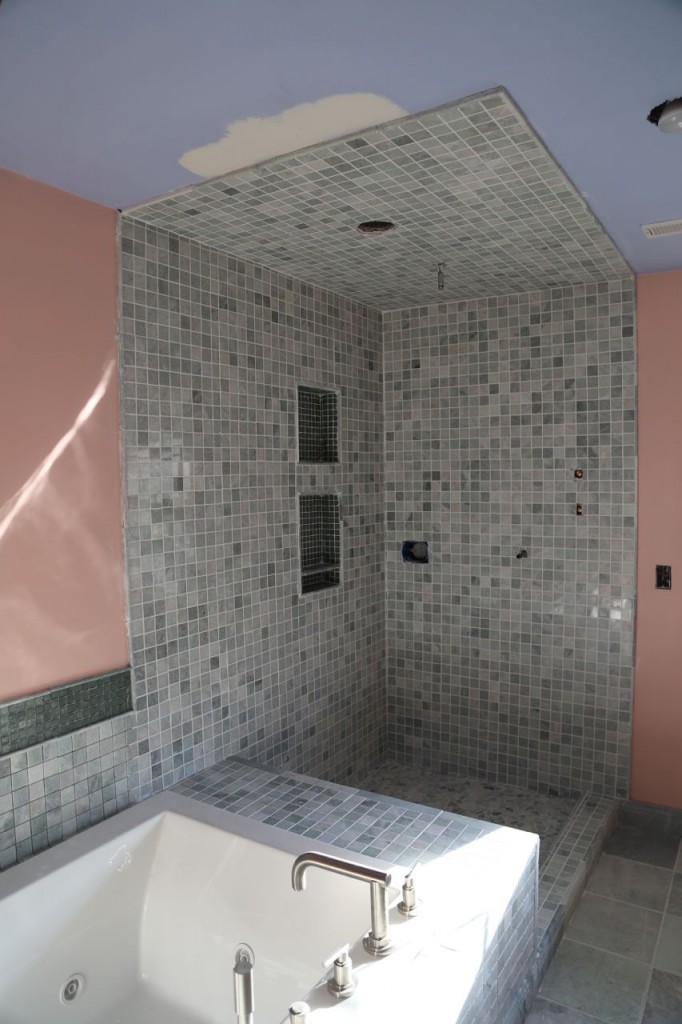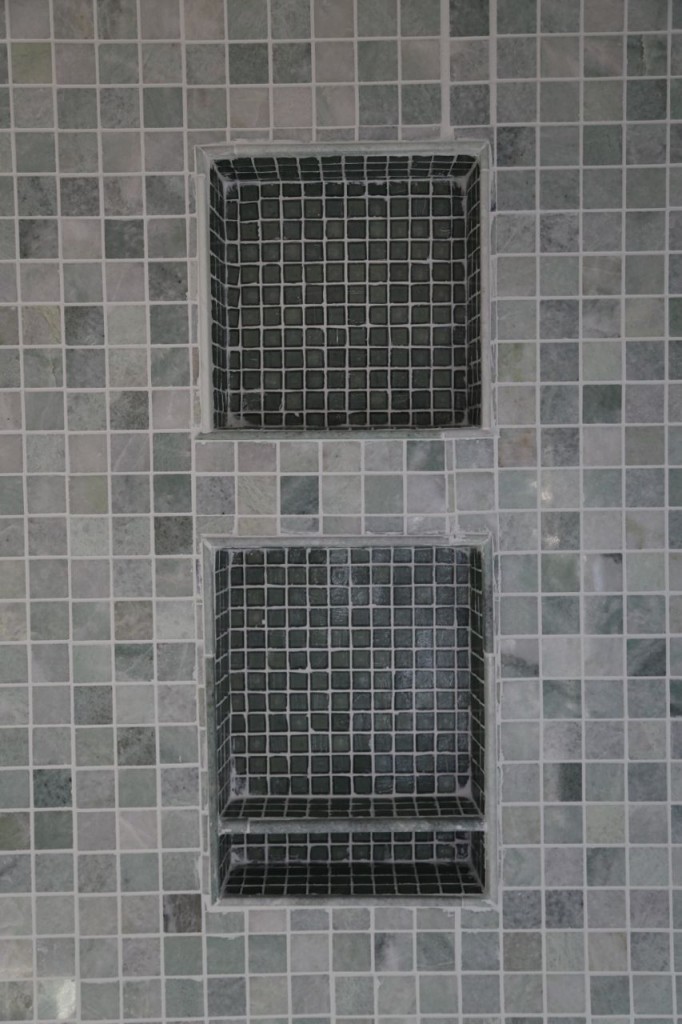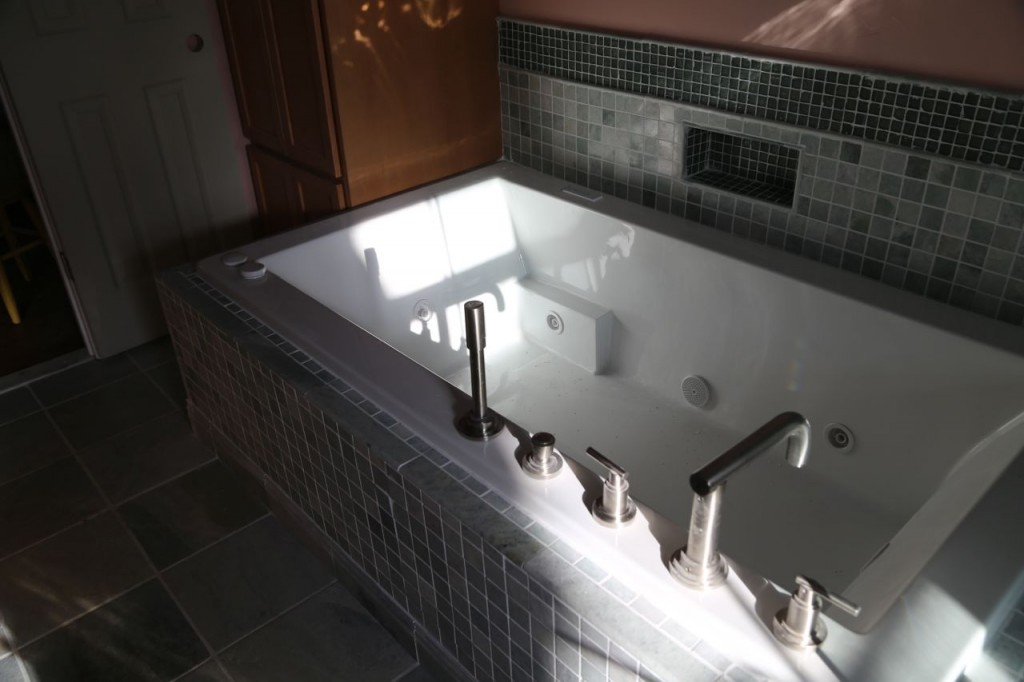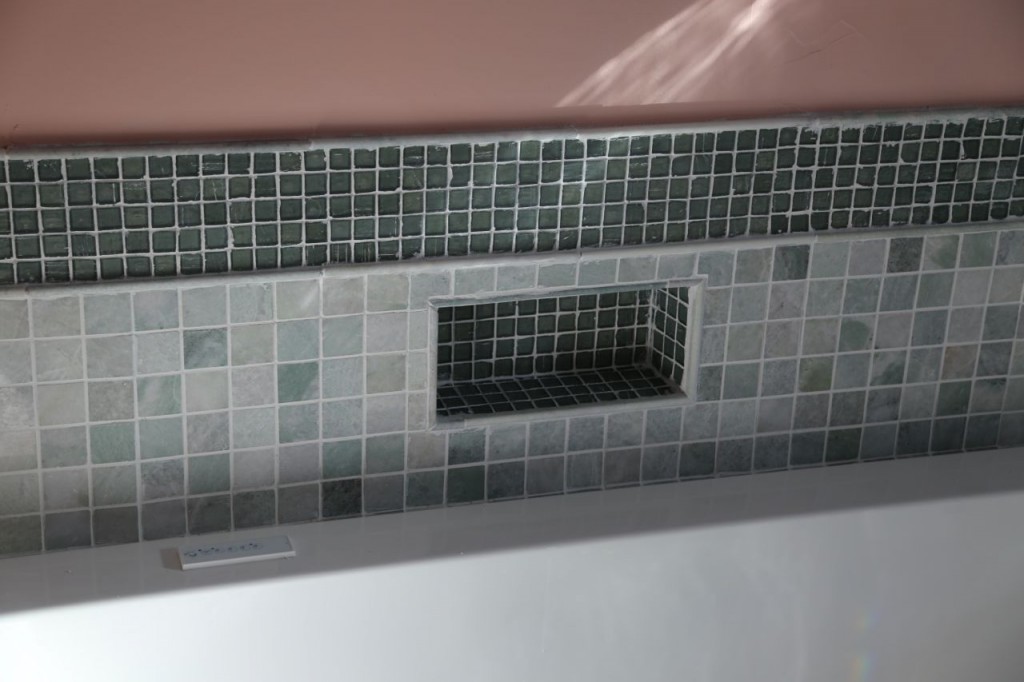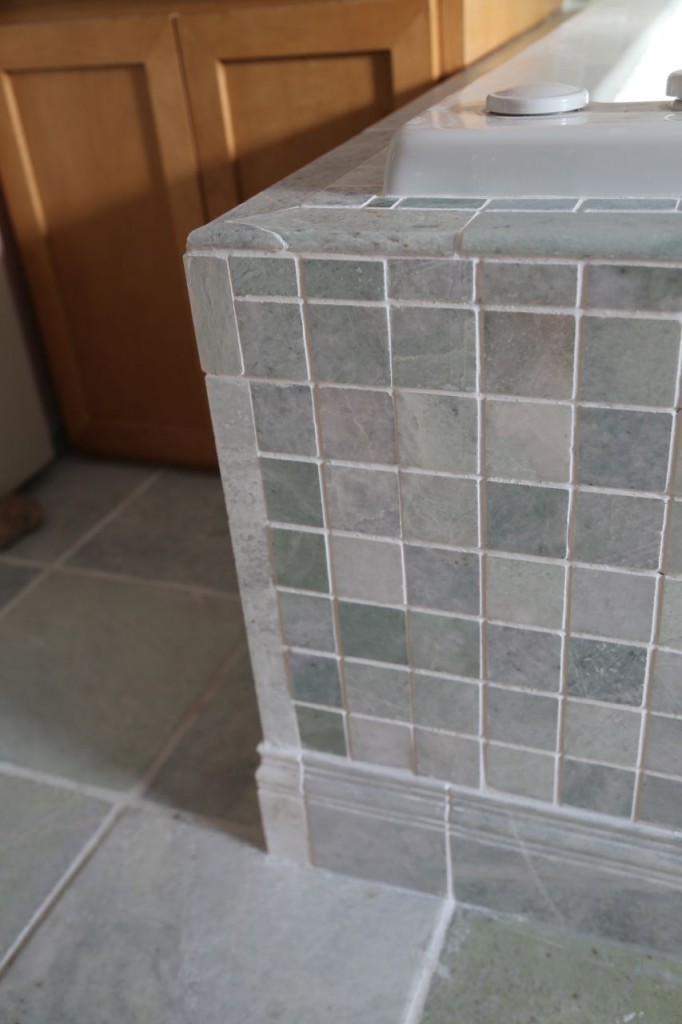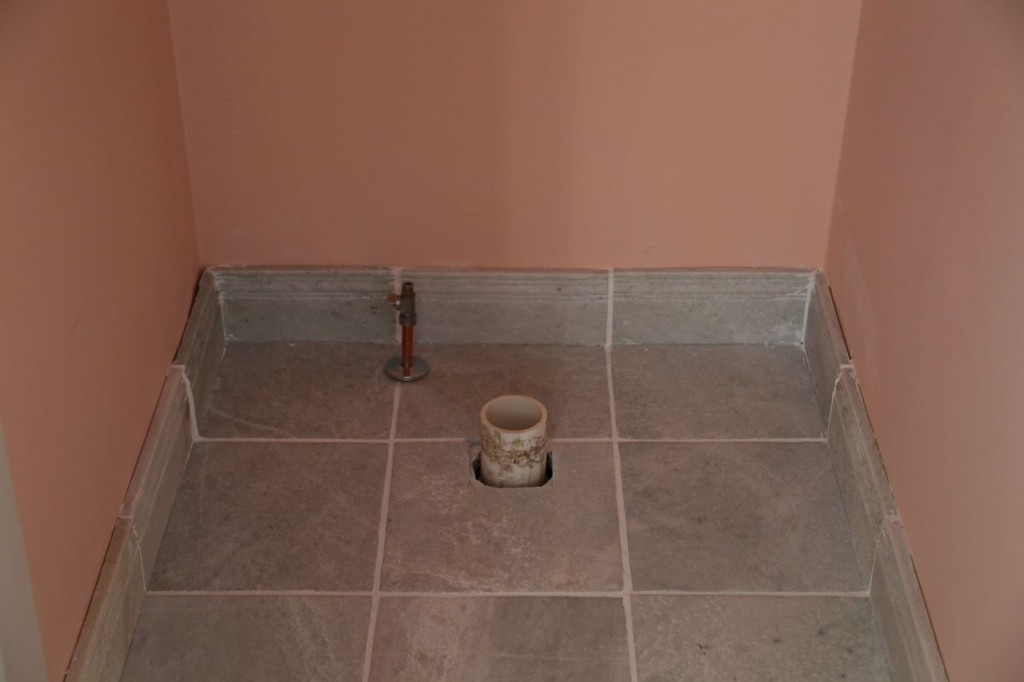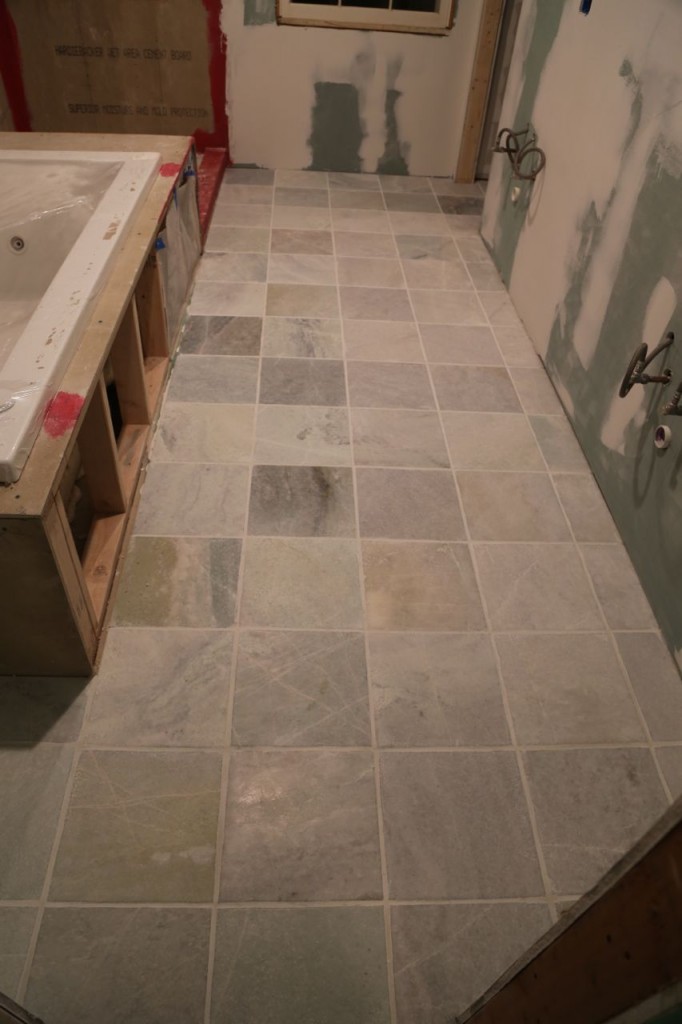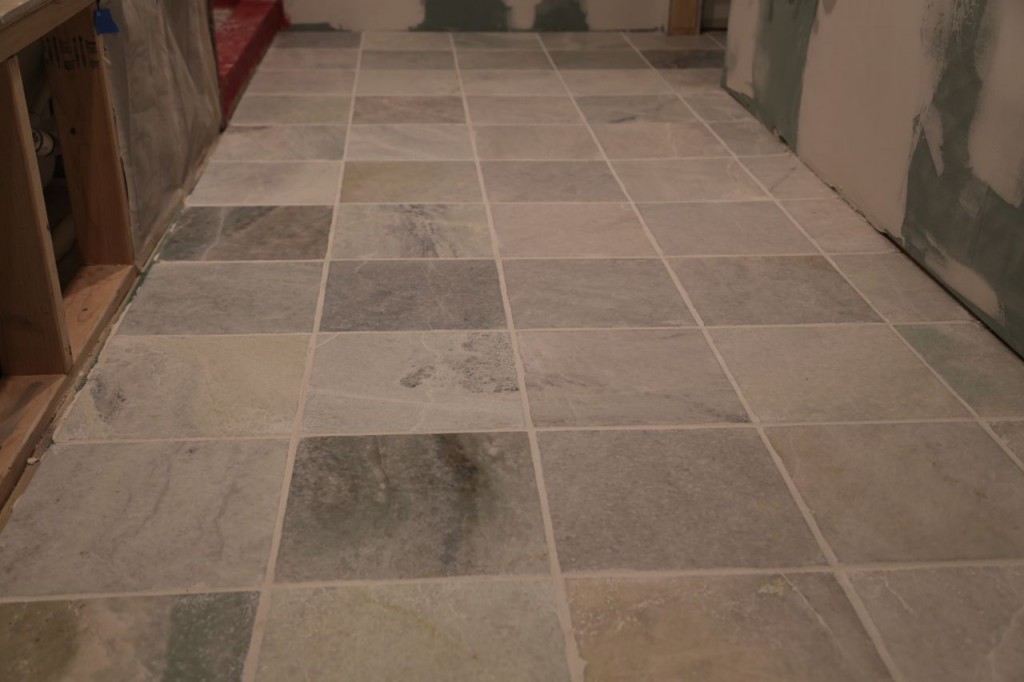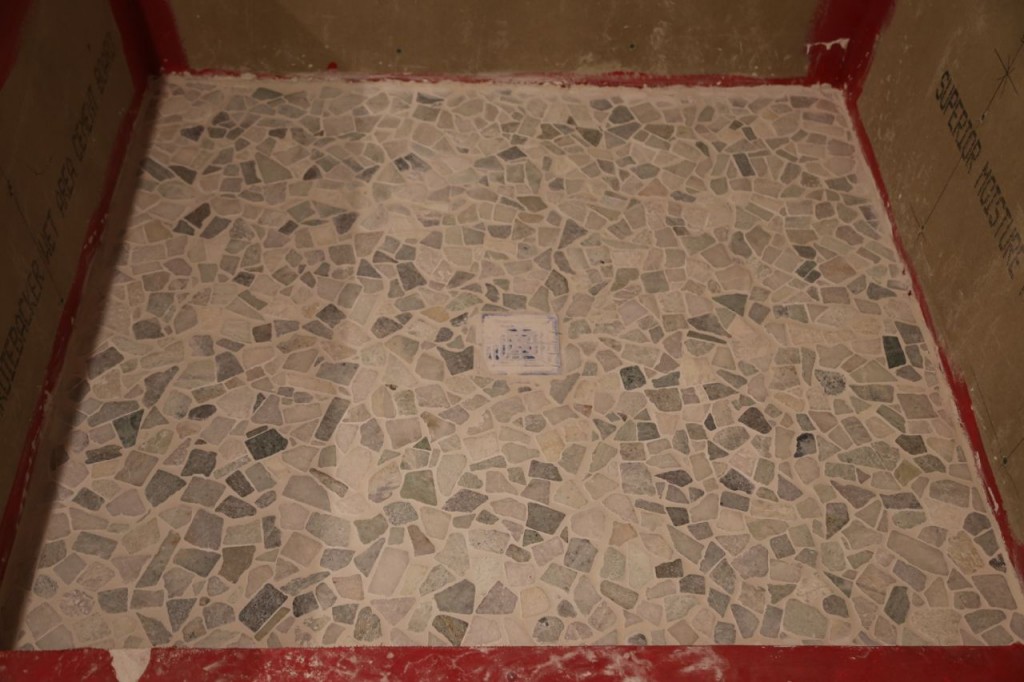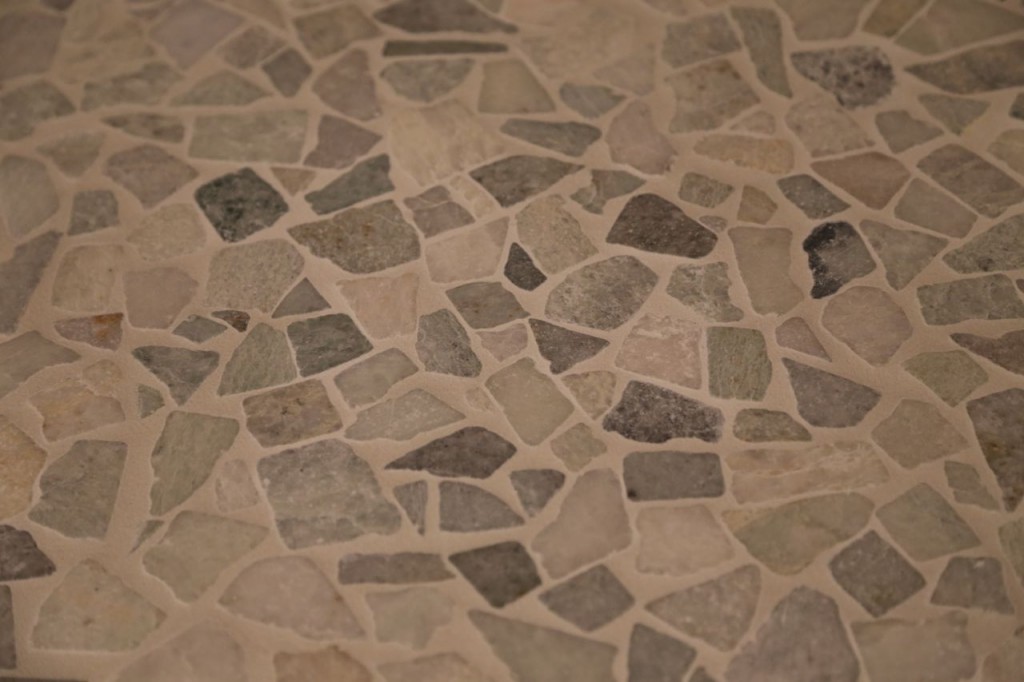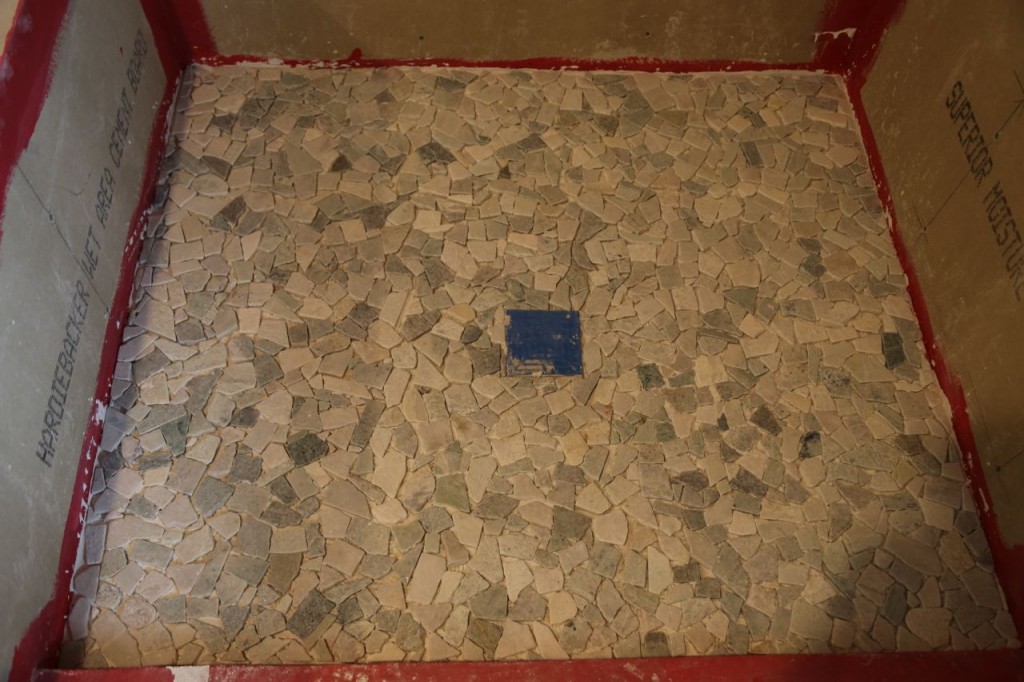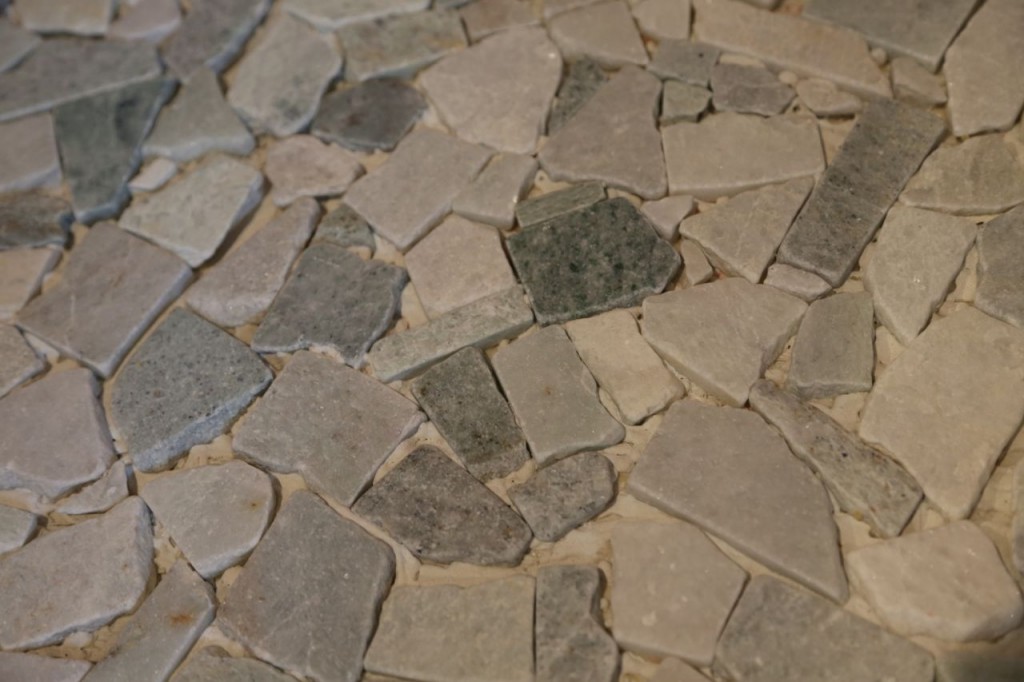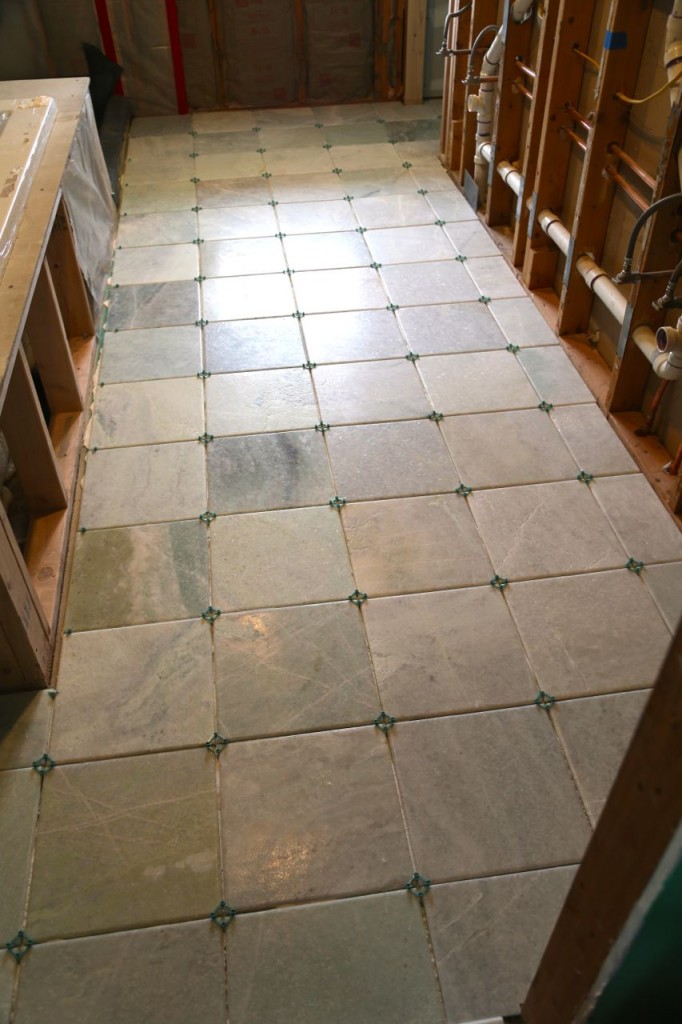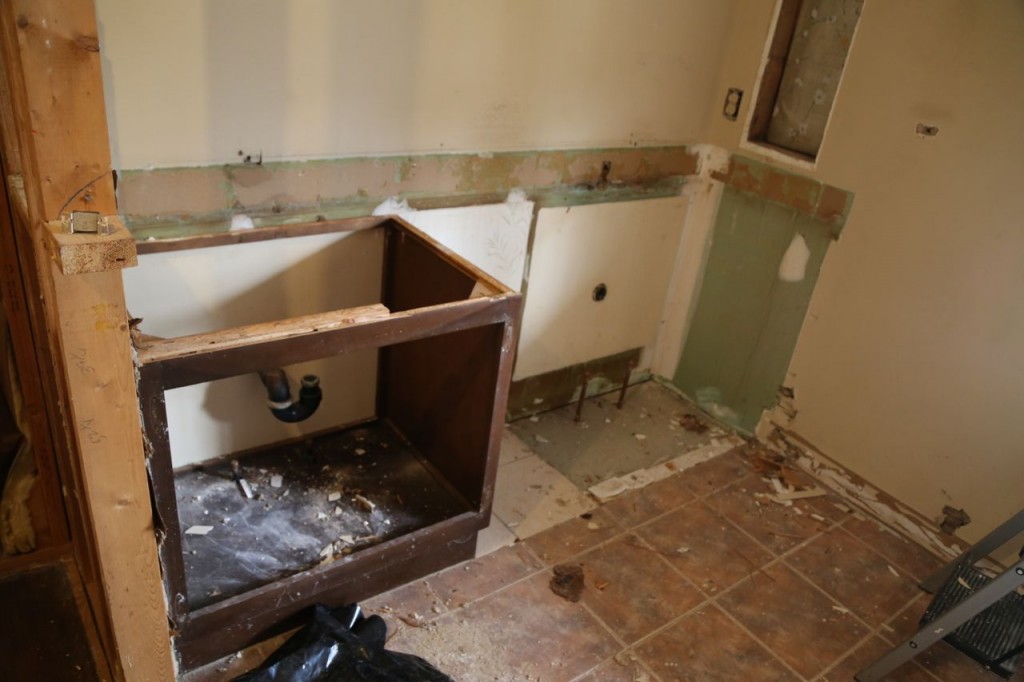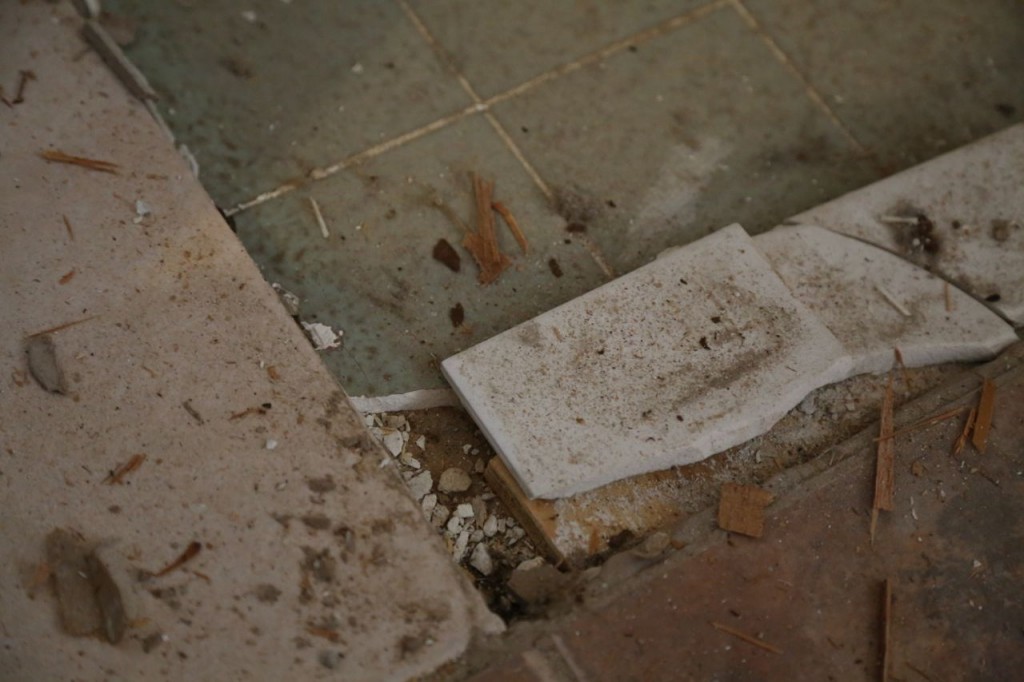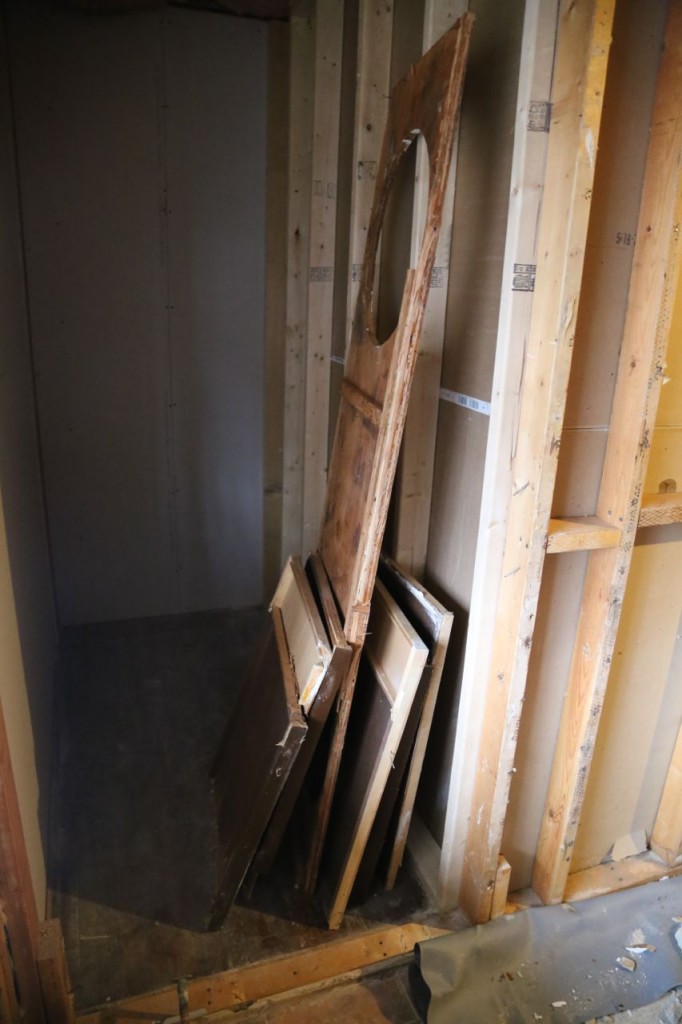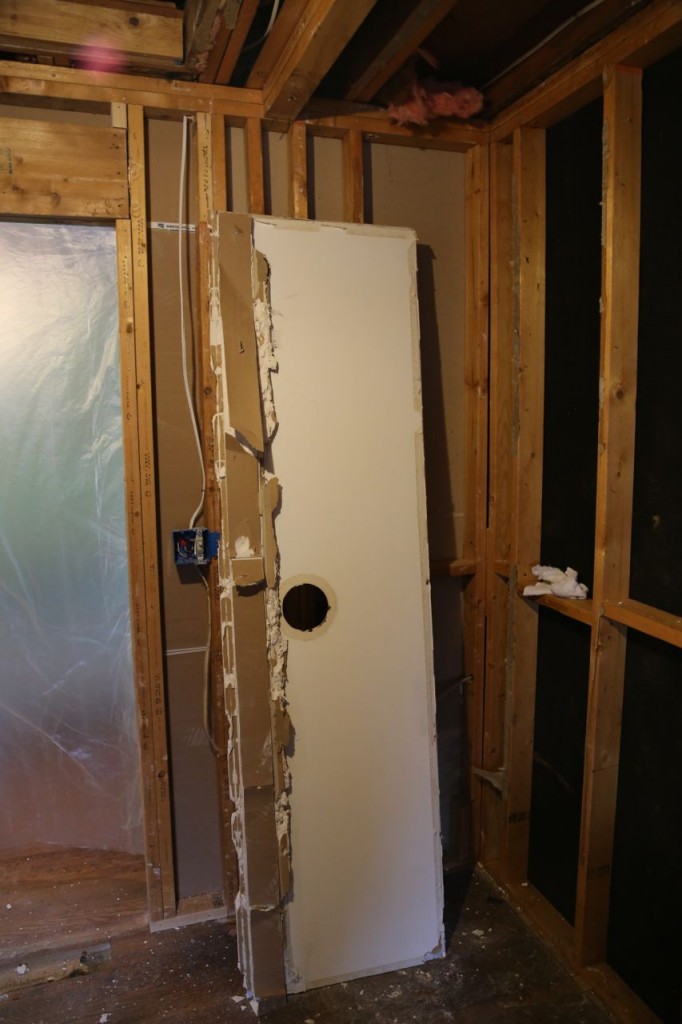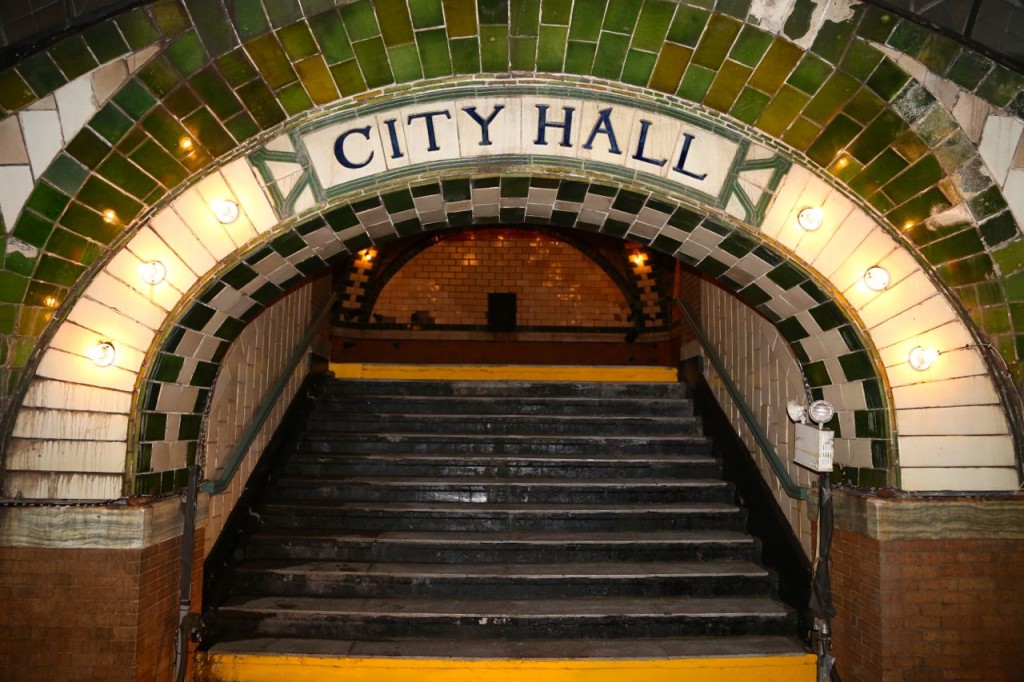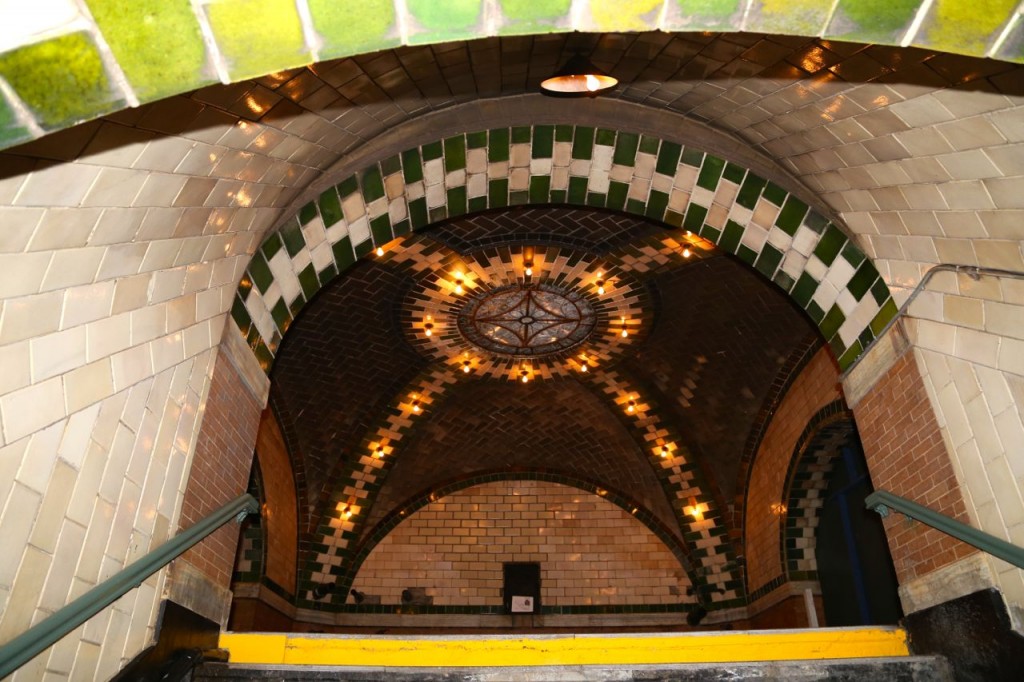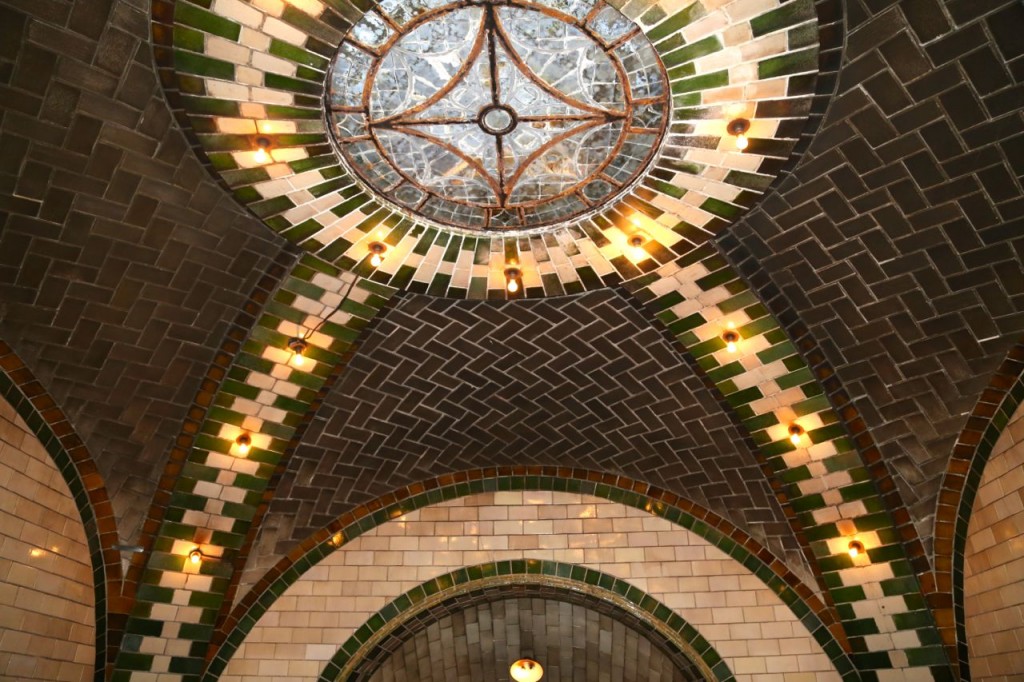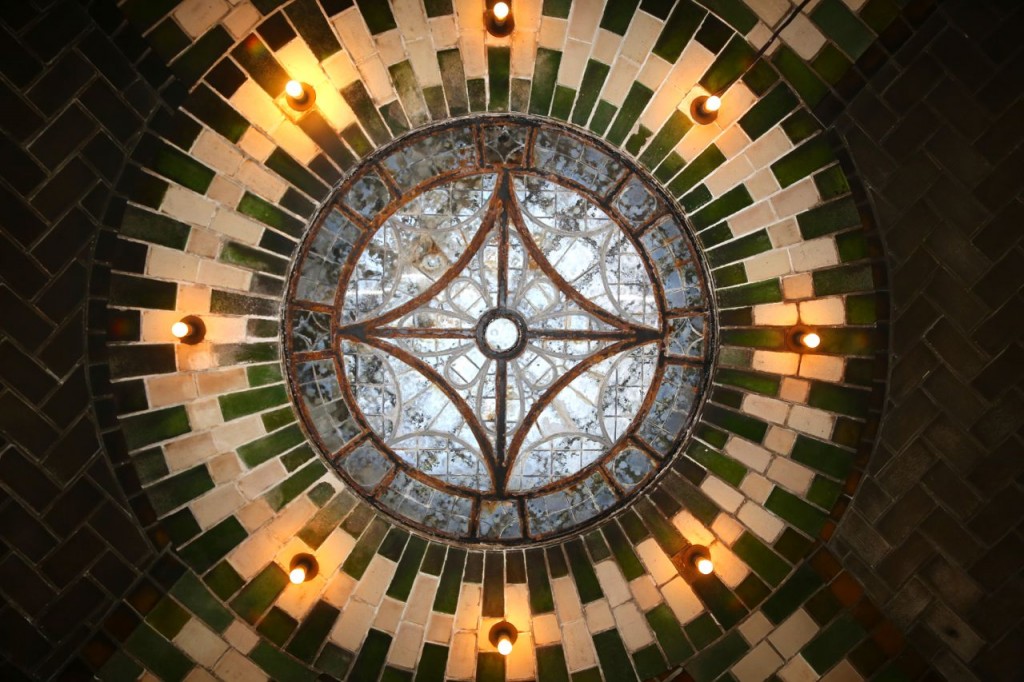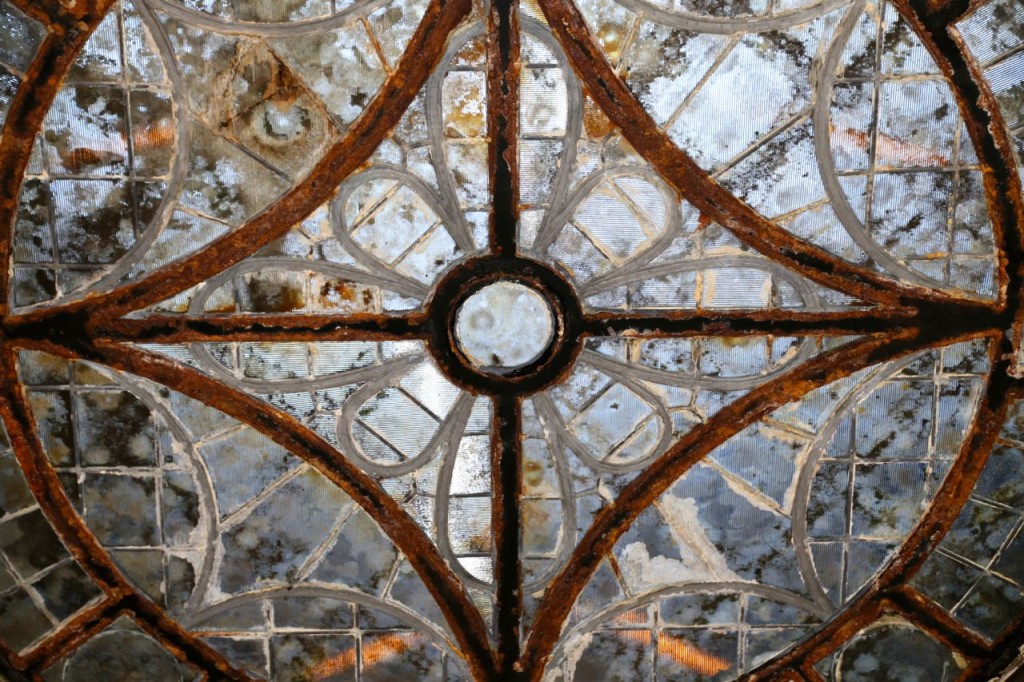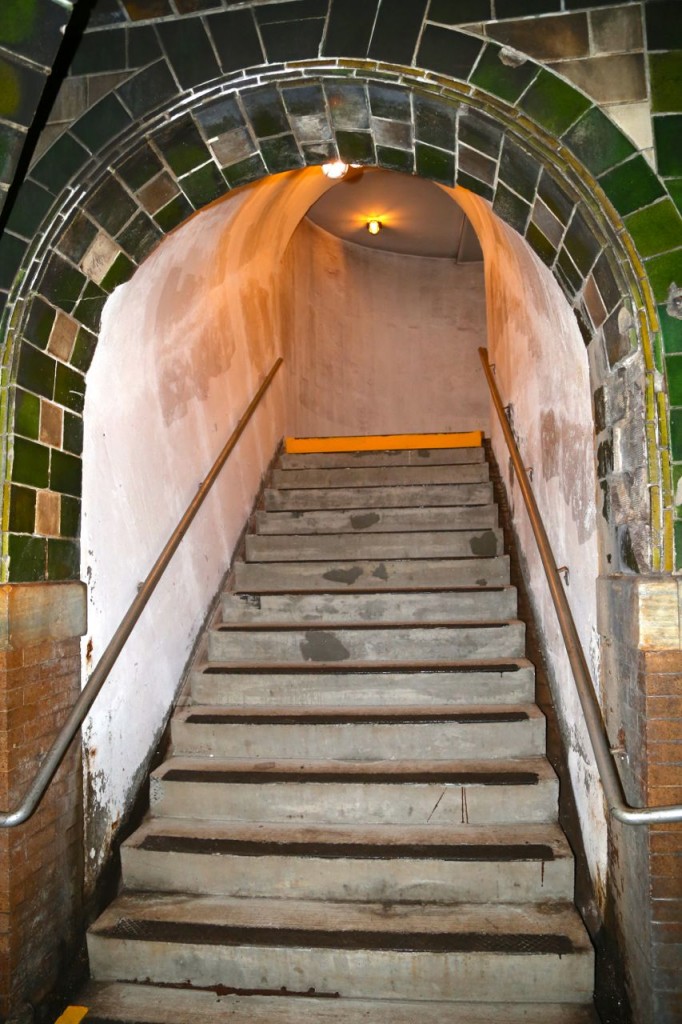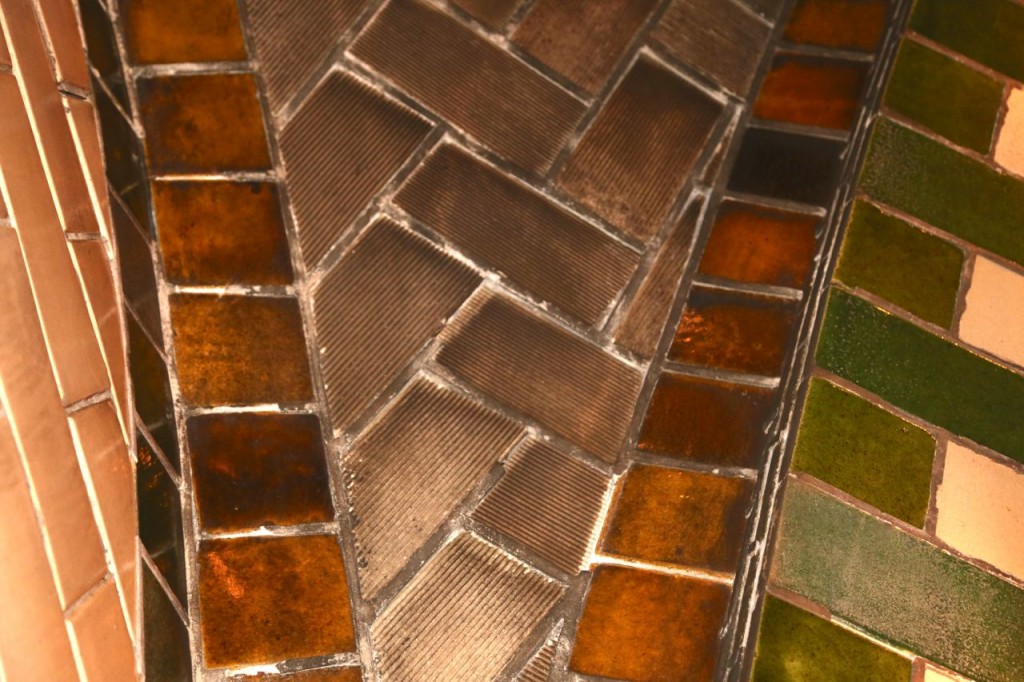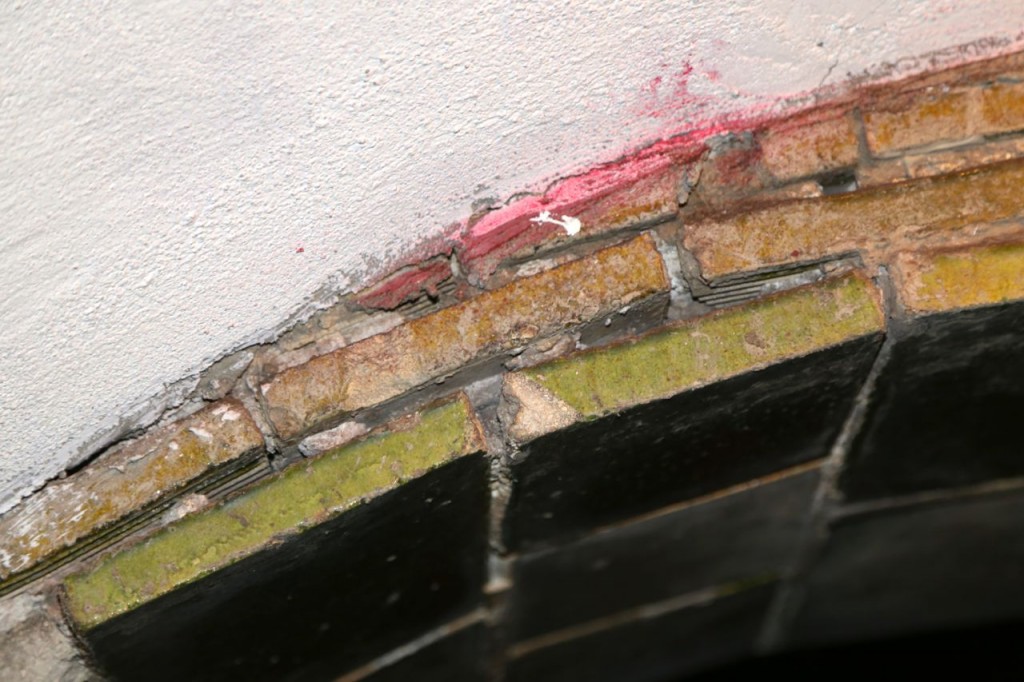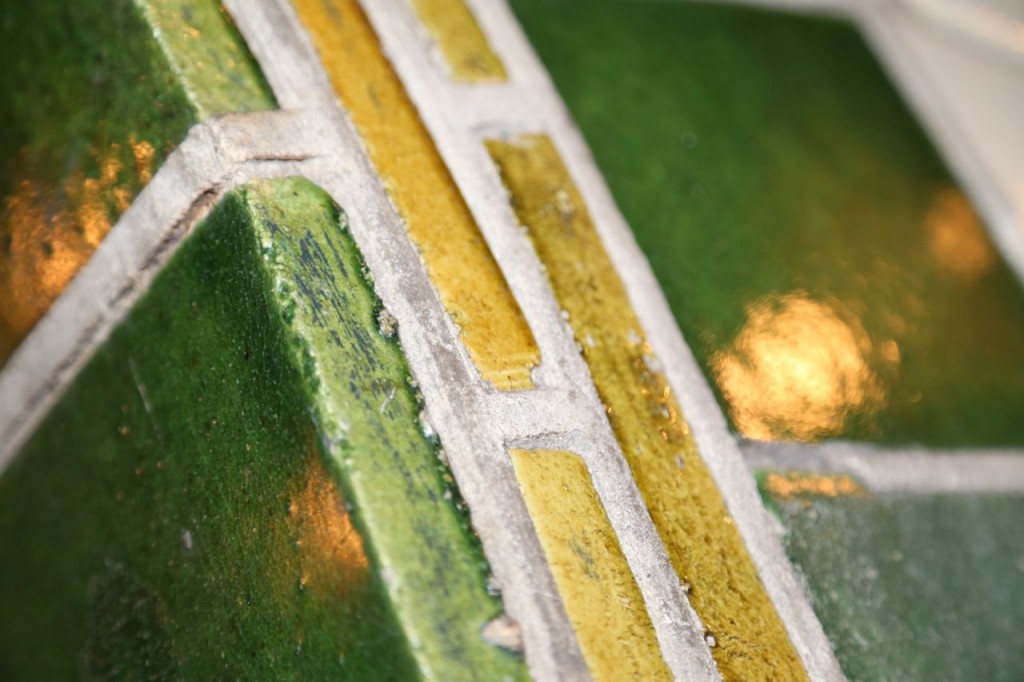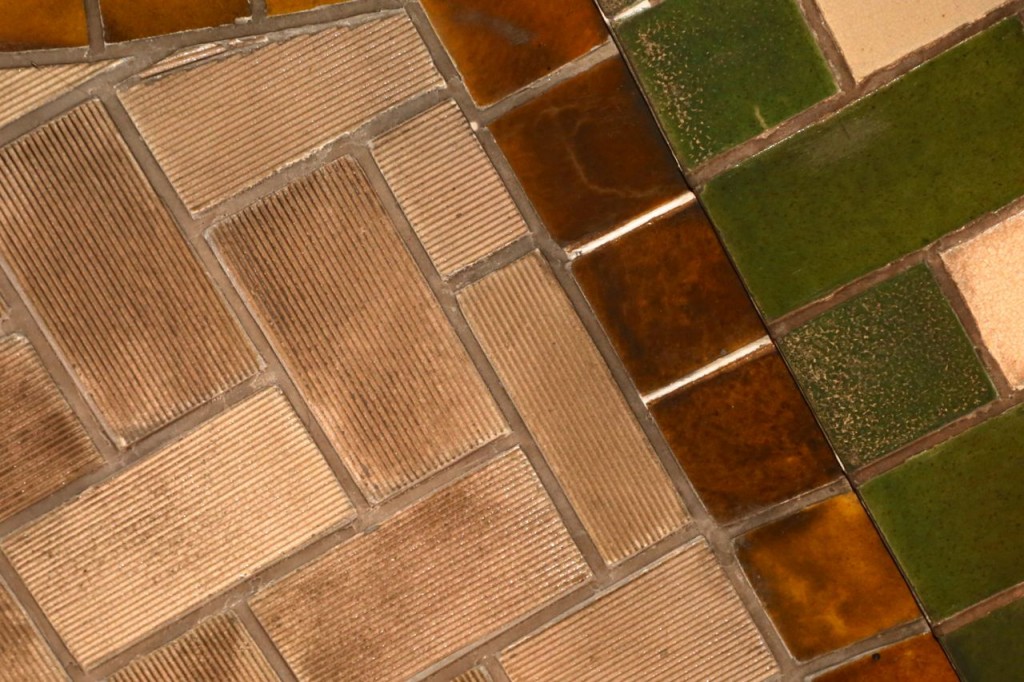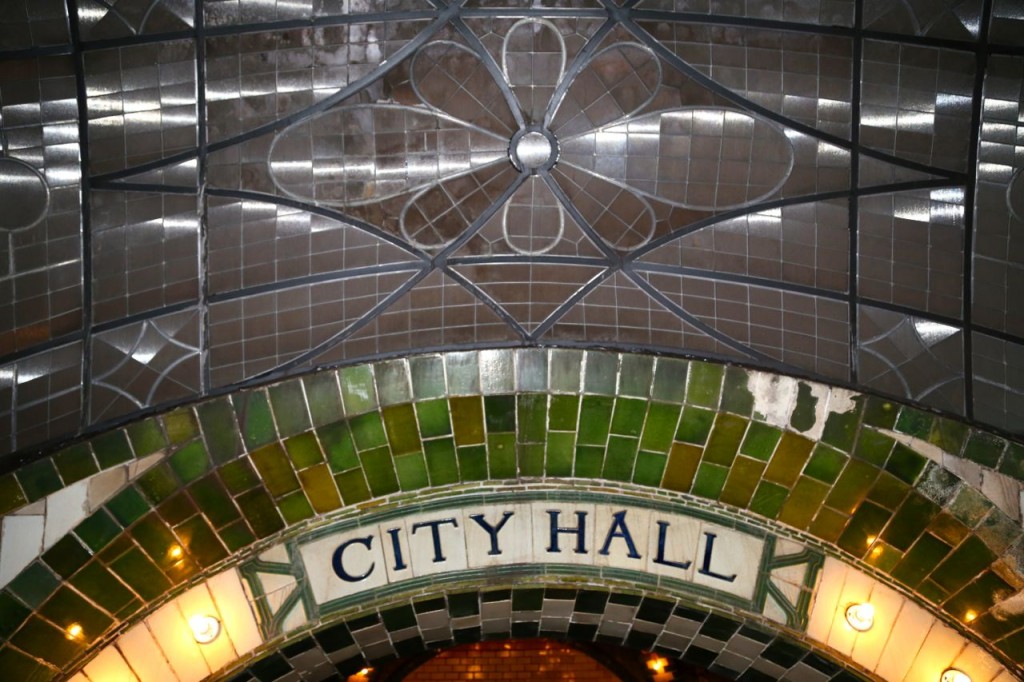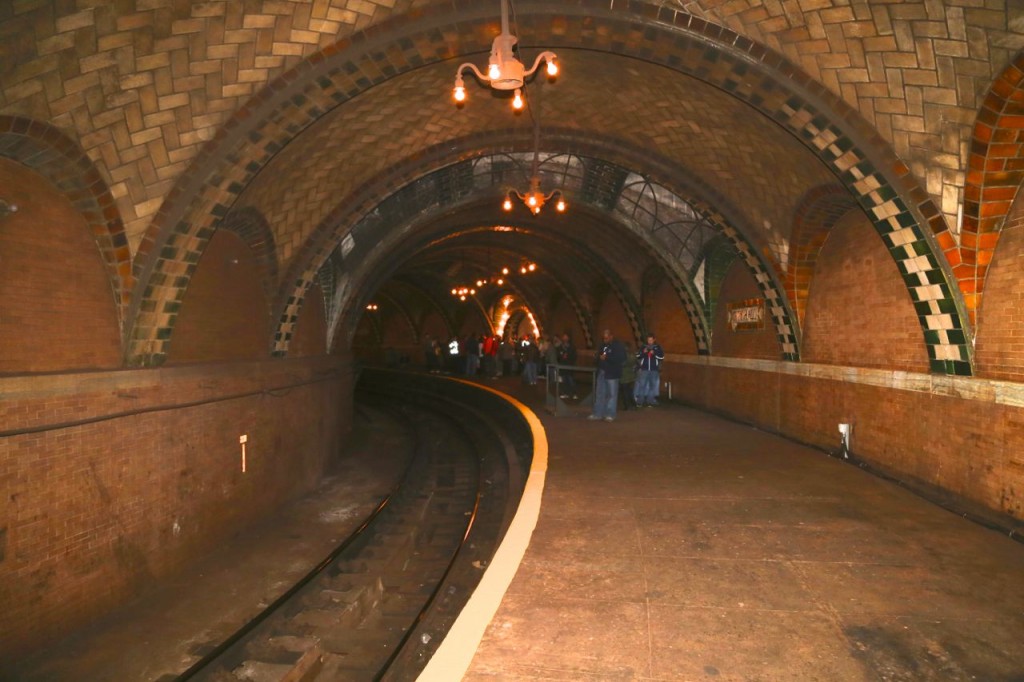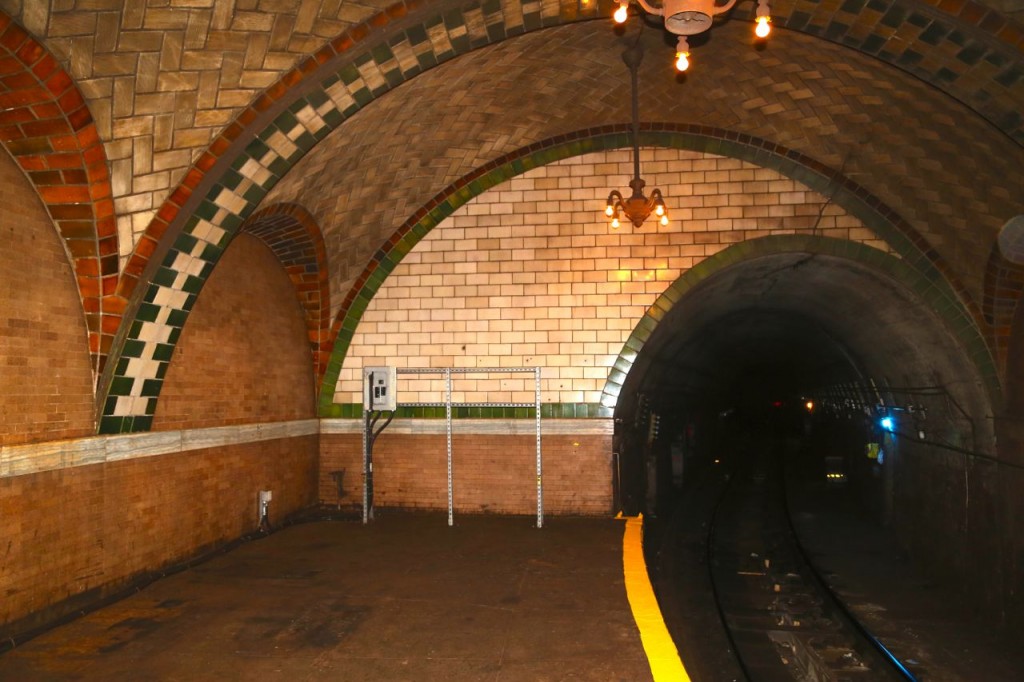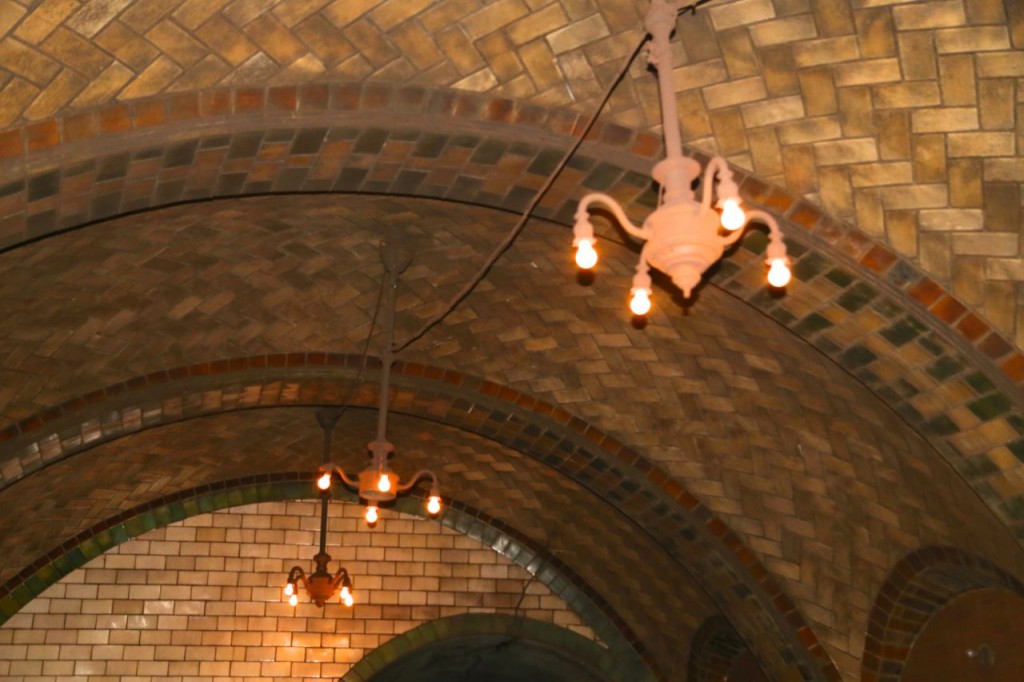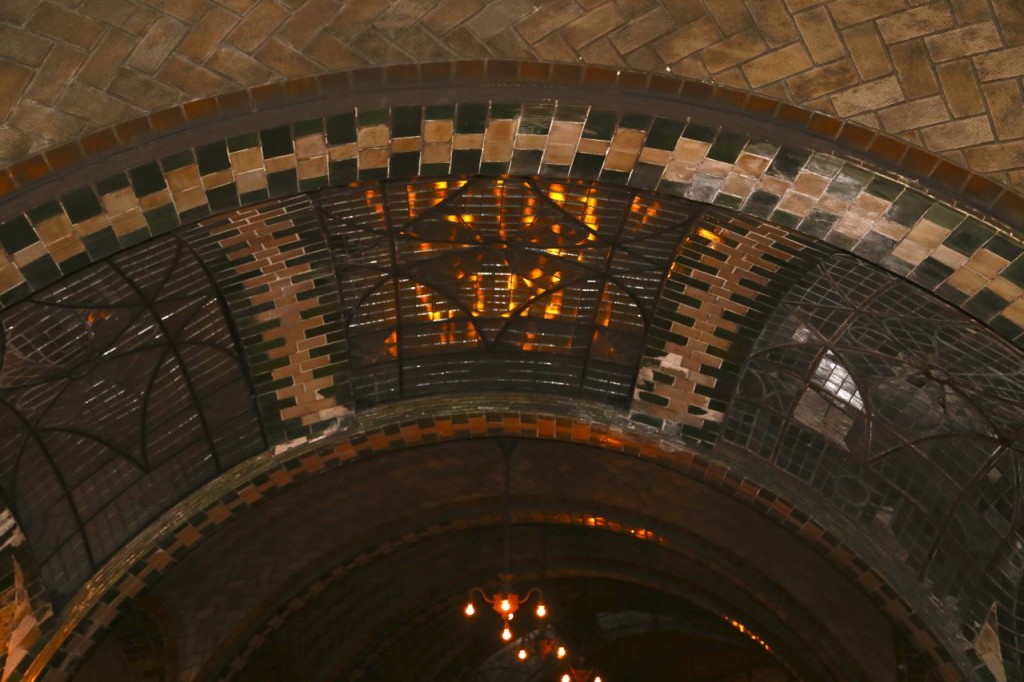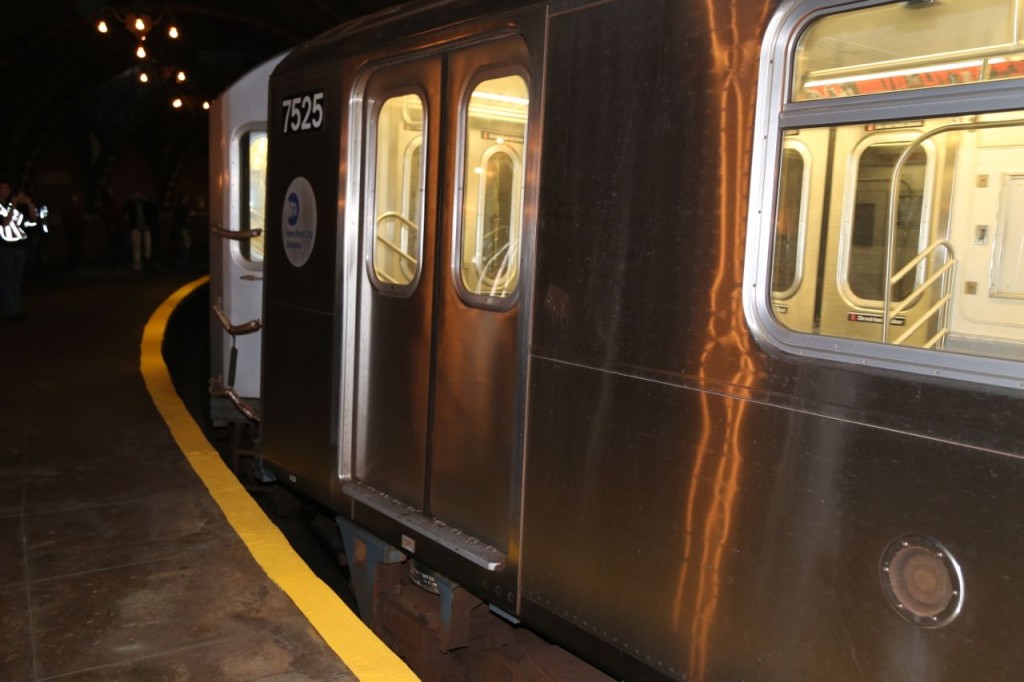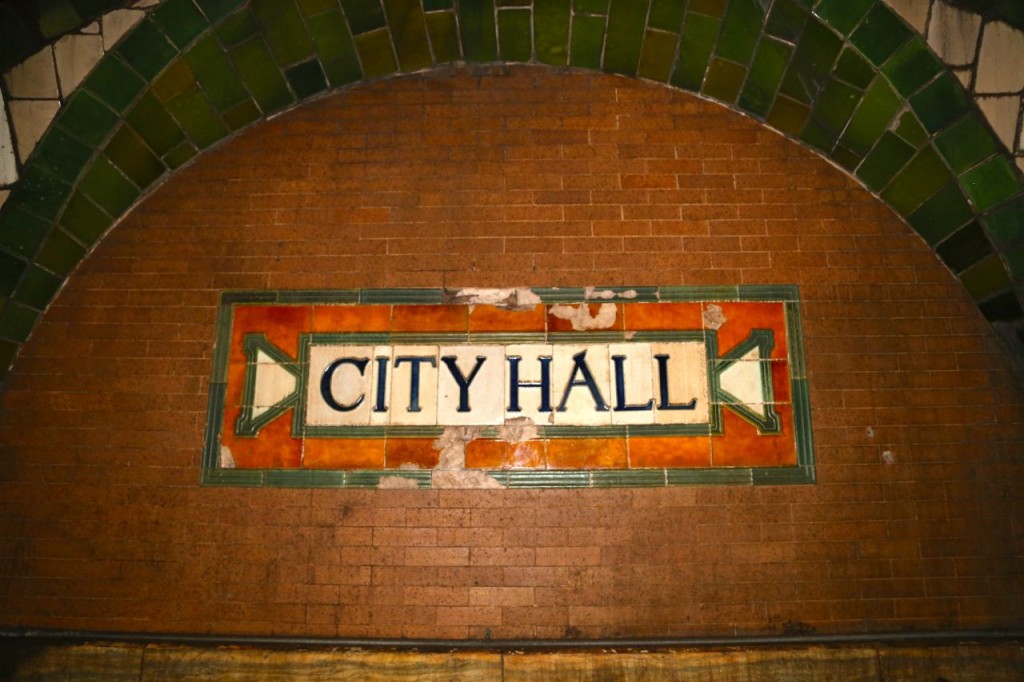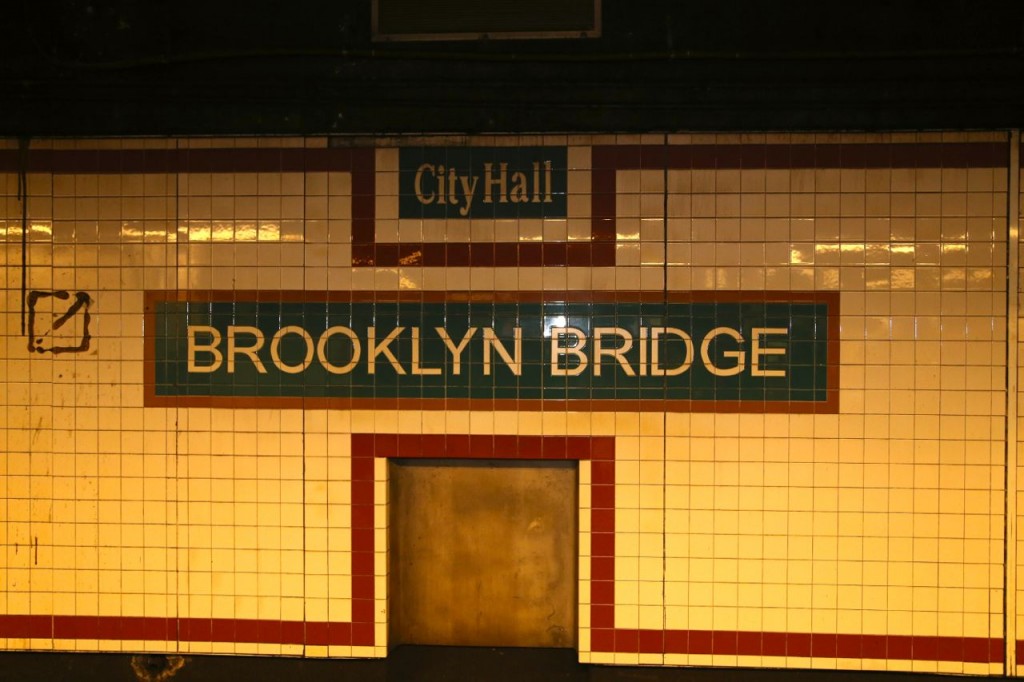Sadly, with this phase of renovation, there was no drywall demolition. I say sadly because drywall demolition is one of my favorite activities. Deconstruction is now finished. The plumber came in first and removed the toilet and disconnected the sink. I removed the wallpaper, tile floors, the vanity, and all the fixtures. I then had a contractor come in and remove the second layer of plywood subfloor which only went around the old vanity. As with previous rooms I have renovated, at some point, “renovators” came and removed the old floor, but only around the old vanity, then put in another layer of plywood subfloor for no discernible reason, and then tiled. Thus everything had to come out to get to the original subfloor.
Tag Archives: tile
Master Bathroom Renovation Is Finished!
The master bathroom renovation is finally completely finished. The bathroom is small, but it has all the features I need and want. It is functional, and I love it. I previously wrote about the cabinets, but the final piece, an open shelving unit that sits on top of the countertop has been installed. All the cabinetry is from Tuscan Hills, and while most of it is standard cabinetry, some of it, especially the false bottom of the wall cabinet for access to the bath mechanics is custom. The tub is an MTI Andrea 14, and I must admit, after having taken a bath in it, it is even bigger than I realized, but it has whirlpool jets and air bubblers and is quite lovely in which to soak. I used frameless glass for the shower and simple, clear glass vessel sinks, so that visually they take up as little space as possible. I previously wrote and posted more detailed photos of the shower, so I am not posting too many here. The plumbing fixtures are all Grohe’s Atrio line. I used Moen’s Iso line for the towel bars and rings, robe hooks, and toilet paper holder, and I used Thomas Lighting’s Pittman fixtures for the vanity lights and wall sconces in the water closet.
Vanity Backsplash Tiled
This weekend I tiled the vanity backsplash. It is a rather high backsplash as I wanted the tile to go at least as high as the wall faucets. I wanted to tile a border around the recessed medicine cabinets, so I decided just to bring the backsplash up to the base of the medicine cabinets. Also, I changed the original design for tiling in the shower, and I have a bunch of left over glass tile, so I might as well use it. The height of the marble tile was determined by the height of the electrical box because I wanted the same tile type surrounding the electrical box, so the cover would lay flat.
Vanity Countertop
One nice thing about buying a stone slab for your countertop, is that if you have to buy the whole slab, you can request to view and alter the layout of the slab cut out. I found a gorgeous sky blue piece of marble with fluorite crystals in it. Fluorite is my favorite mineral, and the blue goes wonderfully with my green marble tile that will be used as the backsplash. The slab was meant to be mine, and I can never move from my house now. It has now been installed in my bathroom, so this weekend, I will be tiling the backsplash.
Shower and Tub Tiling
Another major milestone in my master bathroom renovation has been reach. I completely finished tiling the shower and tub area. I laid and grouted an huge amount of tile. I also tiled the ceiling above the shower because I am insane. I don’t know how many hours it took me, but it was a lot, several weekends and nights after my real job work. It looks great in my opinion, but it was a lot of work. I used two different types of tile. The vast majority of the tile is a gorgeous sea foam green marble tile called Biltmore. The main field tile is polished 2×2 inch Biltmore marble. I used various accent pieces for the edging such as the top of the top platform and a pencil around the niches. Skirting tile of the same marble is used for the baseboards of the platform and the walls. The same marble is used for the flooring, brushed 12×12 for the floor and tumbled cobble for the shower floor. I then used glass tile for accents in the niches and for the top of the tub backsplash. The glass tile is made partially from recycled glass bottles.
Bathroom Floor Is Finished!
Sunday I grouted the bathroom floor including the shower floor, so I can officially call the floor finished. I consider that progress. I grouted those at the same time because I used sanded grout for both. The sanded grout gives more strength and flexibility that is needed on floors than an unsanded grout.
Shower Floor Tile Laid
I laid the shower floor tile on Saturday. The tile is the same marble that is used on the bathroom floor. The bathroom floor tile is 12 in x 12 in tile with a brushed finished. The tile in the shower are smaller pieces that have been tumbled into odd shapes and placed on a mesh to give a cobblestone appearance. I really like using this type of tile for a shower floor because it is naturally slip-proof and feels really good on the feet. The only problem with using this type of tile though is fitting the different pieces together. They don’t line up the way regular shaped tile does. I removed pieces from the mesh of unused tile to fill in any gaps where the tiles met or where a tile met the edge of the shower. It is a bit of extra work, but I really like the appearance and think it is worth it.
Master Bathroom Floor Tiled
I spent the weekend tiling the master bathroom. I got off to a late start Saturday, partially due to wet saw odyssey. However, Saturday, I got all the tiled laid out and cut the majority of tile that needed to be cut. I have never used a wet saw before, so I decided to cut the tile beforehand because I wasn’t sure how it would go. I was particularly concerned about cutting the tile near the toilet supply pipe and drain pipe. Then Sunday, I cut the rest of the tile and then did the actual mortaring the tile into place. I didn’t finish until early Sunday evening. I learned quite a few things during this experience.
- Arranging and cutting the tile beforehand was a good decision. By arranging everything in advance, I was then able to make the measurements to cut the tile properly. Cutting the tile beforehand saved me critical time in laying the tile before the mortar set.
- Laying tile on top of radiant heating mats makes the task that much more difficult. It is not incredibly difficult, but a plastic trowel is essential, so the trowel doesn’t cut through the wire. A thicker layer of mortar is necessary, and getting the correct thickness is tricky. Also, it makes leveling the tile more difficult, especially when some of the tile overlays the radiant heat, but some does not.
- In my opinion, laying tile on the floor is more difficult than on the wall because you have to keep moving your location. Also it is horrible on the knees, back, and lower legs.
- As long as I worked by continuously moving back towards the door, one row at a time, I was able to keep the tile evenly spaced and in line. I started at the back of the water closet, and then worked backwards into the main bathroom. At the end I encountered an issue because after I got to the end of the tub, I needed to start at the end of the aisle that leads to the wall cabinet that will sit next to the tub. Because I kept removing two rows at a time to keep a continuous layer of mortar, I had trouble keeping these tile exactly in line with the tiles down the main aisle. There was a small discrepancy where the two areas met where the grout line will be slightly thicker than the rest of the grout lines. Hopefully no one will notice but me. Problem was the mortar had already set at the back of that small area, so I couldn’t move the tile to make it fit. In hindsight, I should have marked the wall or something, so I would have known exactly where to lay the tile in that small area.
- When the mortar directions say it has a 20-30 minute working time, it really does. You don’t get more.
- Since I laid the tile out in advance, I then had to walk across many of them while working. At least three broke while I worked. The tile is 12 x12 inch marble tile, and many have a lot of veining. Those that broke, broke on veins. While they are clearly fragile, I do not know if it they would have broken after having been set on mortar and allowed to set. Thus, was their breaking before laid, a good or bad thing?
- As stated, I am using marble tile. The tile is green, gray, and white. One of the reasons, I laid the tile in advance was so that I could lay the prettiest and greenest tile in the highest visibility areas. This was a good decision.
- Keep a small, preferably disposable, bowl with some water and a rag near you to clean up potential excess mortar that comes up between tiles when pressing down a tile to level it.
- I need a new or better, or probably both, power drill. I bought a mixer attachment for my power drill to mix the mortar. When I tried to use it, it didn’t work all that well, and the drill started smoking a little. I ended up using the trowel to do most of the mixing, especially to get the powder out of the bottom corner.
- I am not as young as I used to be, and my knees, back, and lower legs are rather upset with me at the moment.
- Ferdinand the basset hound is rather underfoot. Okay, I knew that beforehand, but he really confirmed it today.
- Ferdinand can sleep within 15 feet of an operating wet saw. No, he is not deaf as he can hear a plastic bag holding sandwich bread being opened across the house. [I always give him a piece of the bread loaf ends.]
Phase 3 Deconstruction Continues
I did more deconstruction this weekend, and all that is left to demolish is the flooring, a few interior studs, the stud headers, and the shower pan. I am turning it over now to the carpenter to remove all of that. I realize now that this phase of renovation should not have been done during the coldest time of the year. Because of the condition of the drywall that made up the ceiling and all the reconfiguration that was needed, I removed all ceiling drywall. I also removed the attic insulation above it as nothing would be there to support it, and I need to put in better attic insulation anyway. This means though that this area is at the same temperature as my attic, which is freezing, and I am going to have an awful electric bill next month. I have a plastic sheet securely hung in the doorway to the bedroom, but still it not a really good air barrier.
I removed the vanity by hammering the crowbar in-between the plywood sheet that made the counter base and the layer of plywood it sat on. The glue that held it cracked fairly easily, and I could the lift the whole thing out. After doing that, the rest of the vanity was fairly easy to disassemble with a bit of hammering and pulling. It was not all that well constructed. Once I removed the vanity, I discovered that the original floor in the bathroom was tile that matched the vanity countertop tile. That was interesting and a nice touch on the original design. I don’t have a clue why they removed that tile, added another layer of subfloor, then put new tile on top.Then again, I have no clue why the later home “renovators” put insulation in the three walls that made up the side of the shower because the shower was completely interior to the house. Oh well, it is almost all removed now, and soon all of it will be replaced.
More photos can be found on Home Renovation Phase 3.
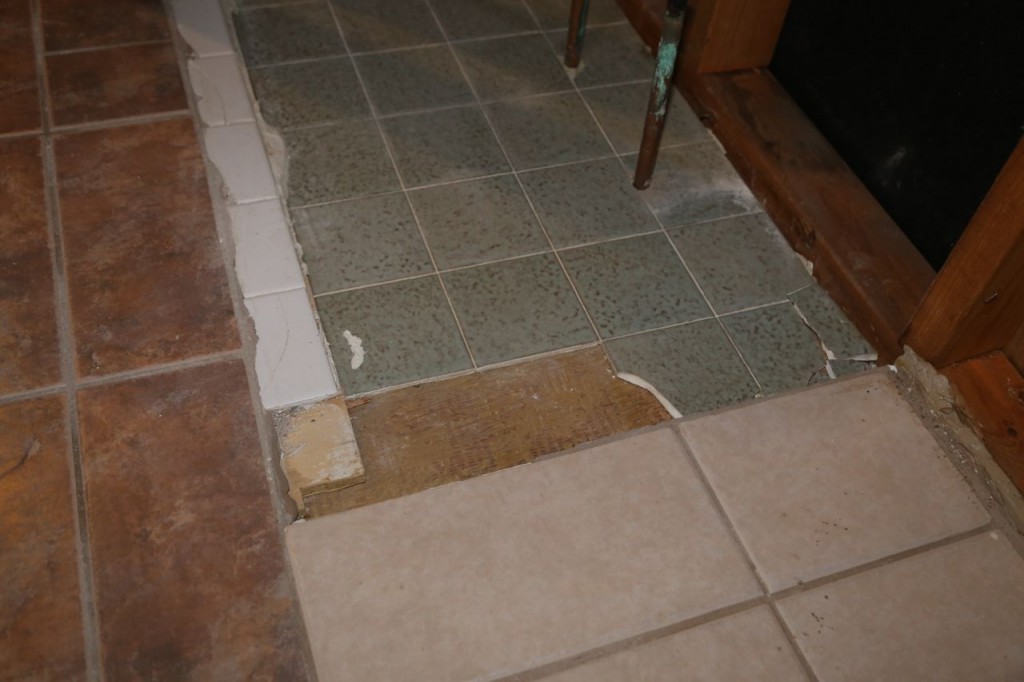
All the various tile flooring in the bathroom. The aqua square tiles were underneath the vanity and match the countertop. The large off-white ones were in the space between the two vanities.
Old NY City Hall Subway Station
Saturday, I got to tour the abandoned New York City Hall subway station. The New York Transit Museum gives tours of it a few times a year, and this tour is completely worth the membership in the museum. The old City Hall subway station was originally the southern terminal of the original Interborough Rapid Transit (IRT) subway route. The station is located on a single 600-foot long track loop that is located south of the current City Hall/Brooklyn Bridge subway station. The track loop is still used by the #6 subway line. After a #6 train drops off passengers at the City Hall/Brooklyn Bridge station from a southbound route, it then uses the loop to return to that station as a northbound train. For our tour, we met at the southern end of the City Hall/Brooklyn Bridge subway station, and then once all passengers had been offloaded from a southbound #6 train, we got on for the short trip to the old City Hall station.
The old City Hall station has a platform that is 400-feet long and is completely curved. This short and completely curved platform is part of the reason why the station is no longer used. The ten-car trains now used don’t fit in the station, and it is a serious hazard stepping off the train to that platform. [Our MTA guides used a short wooden platform to allow us to easily and safely get off the train onto the platform.] The station was closed in 1945 because passengers preferred the Brooklyn Bridge station due to its longer and straight platform and also because both local and express trains stopped there.
The station is completely gorgeous. There is a mezzanine level where passengers would buy tickets. The mezzanine is square with four arches that form each of the walls, and an arched ceiling joins the four arched walls. At the center of the mezzanine ceiling is a glass skylight. One of the arches of the mezzanine forms a passageway that leads down to the platform. The platform is then made of 15 more arches. Three of the arches have three glass skylights each. Electric chandeliers hang from each of the arches to provide light. All of the arches are created by Guastavino tile arches. The walls and ceilings are covered in green, brown, and cream tile. Interestingly, much of the cream tile is unglazed and rigged. Evidently this tile was never supposed to be exposed, it was rigged and unglazed because it was supposed to be covered with cement, and the ridges would provide more surface are for the cement to stick, in the same way as when tiling, the ridged side of a trowel is used to create ridges in the cement before placing the tile. However once the tile was placed, the station architects liked how the exposed ridged tile looked.
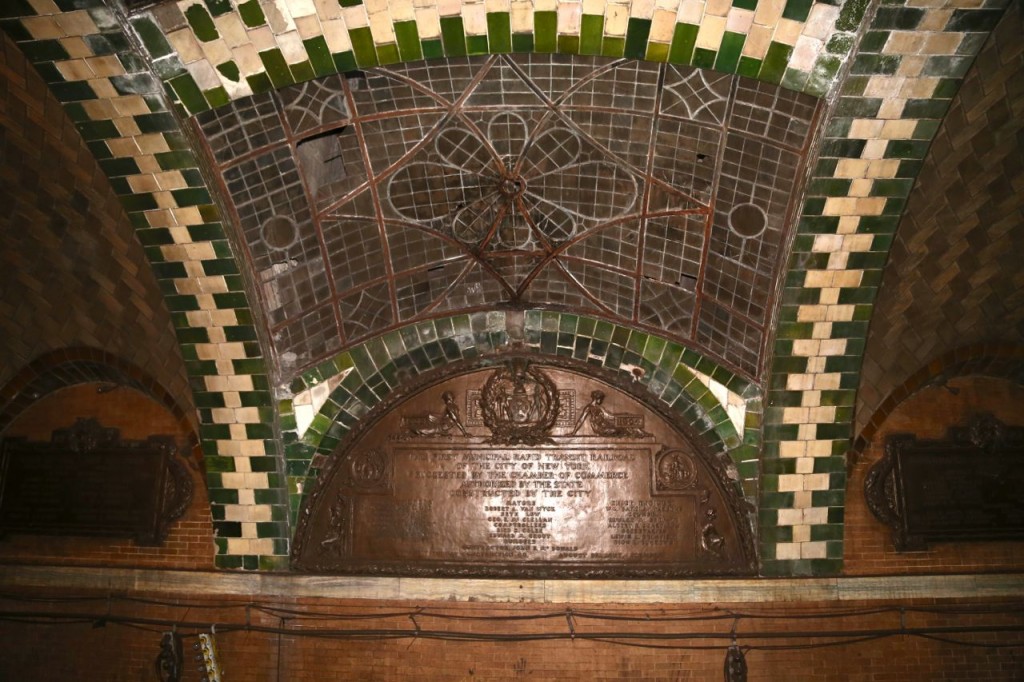
The middle arch on the platform where the passageway from the mezzanine ends. The arch has three skylights. Opposite the passageway are three plaques commemorating those who helped in the station’s creation.
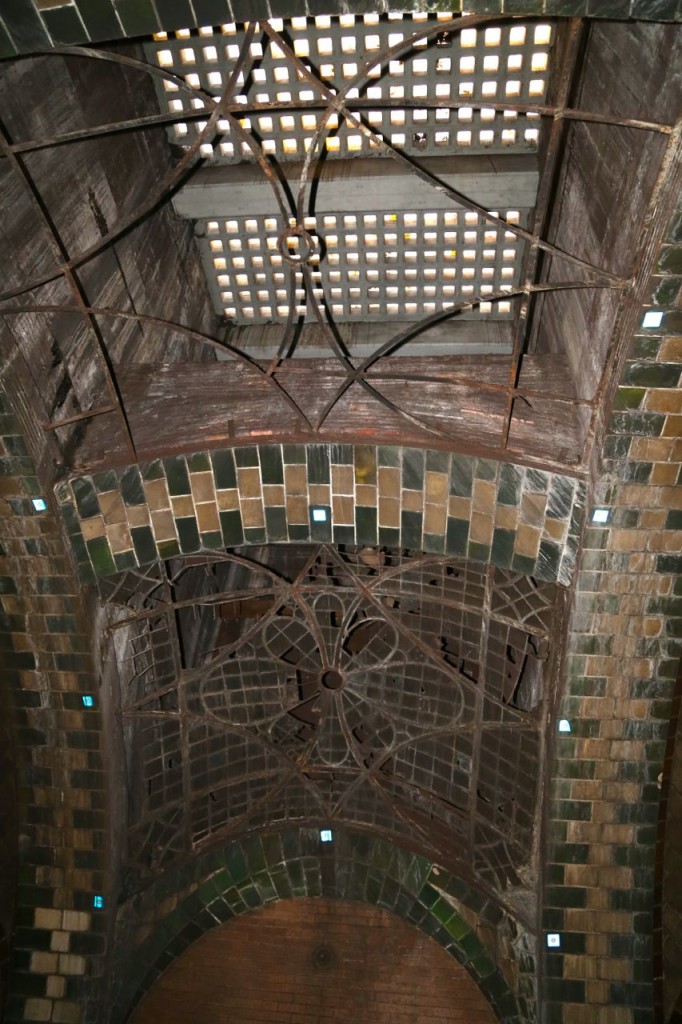
One of the platform’s skylights. The glass has fallen out of one of them, and the glass in the street level concrete can be seen.
One thing I have always appreciated about the New York subway system is the tile work. All the stations have tile work, and generally each station has a somewhat unique tile work for at least the station signs. Some stations have really unique and beautiful tile work for example the Times Square and American Museum of Natural History stations. The tiles themselves in the old City Hall station are not gorgeous, but the way they are placed together in the arches are. Therefore for final comparison, below are the station signs at the old City Hall station and the new City Hall/Brooklyn Bridge station.

